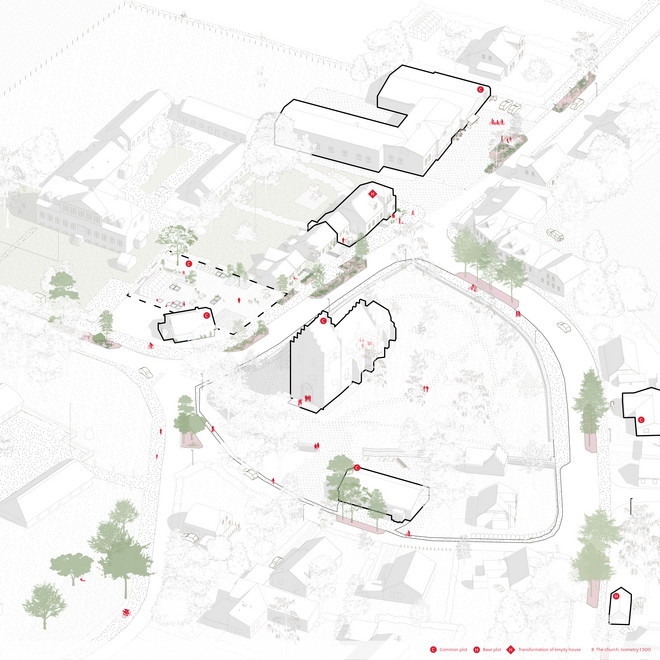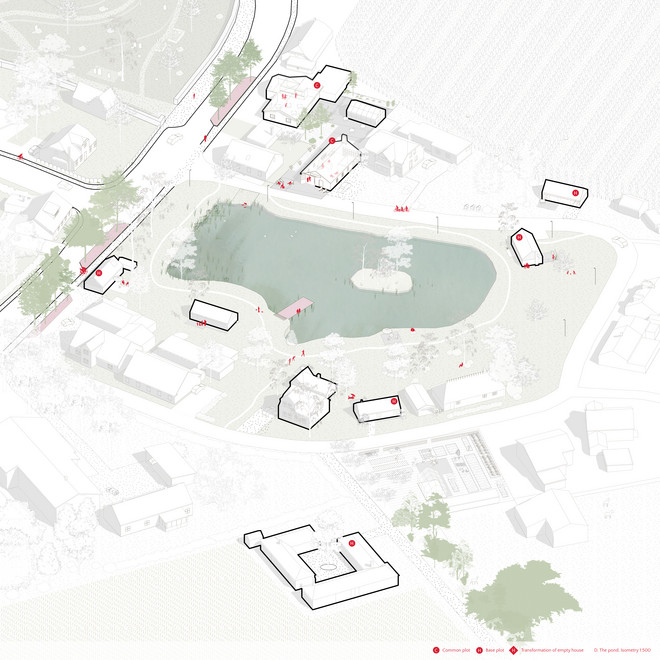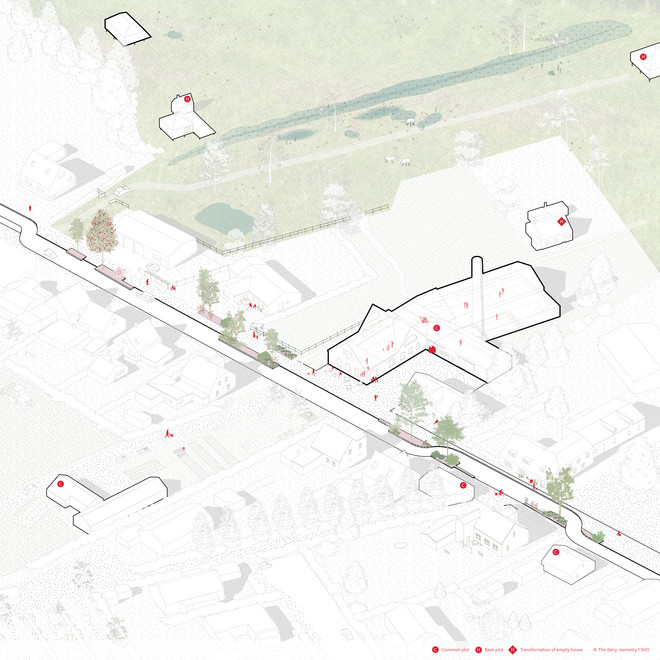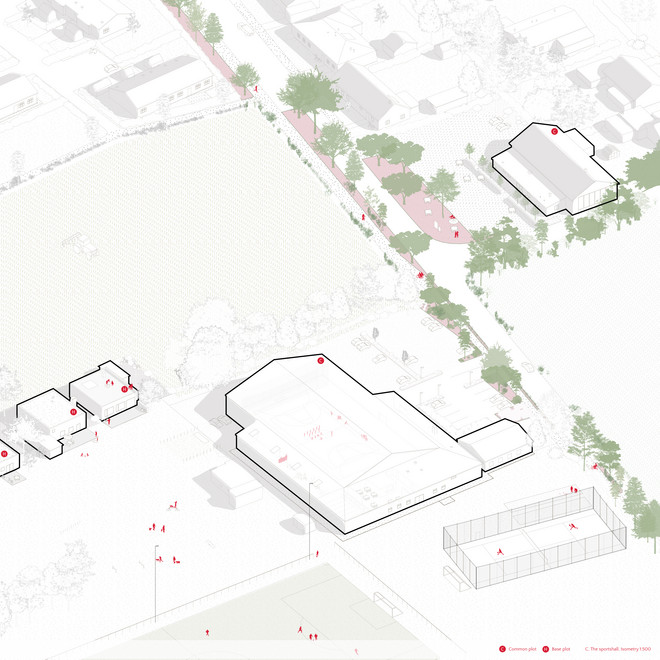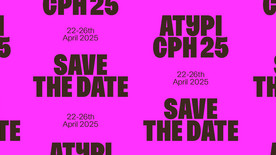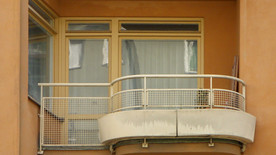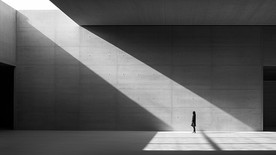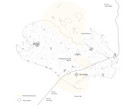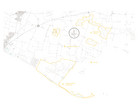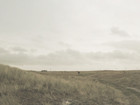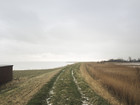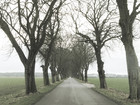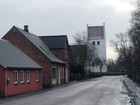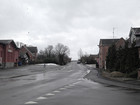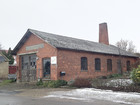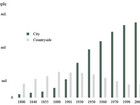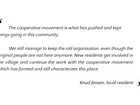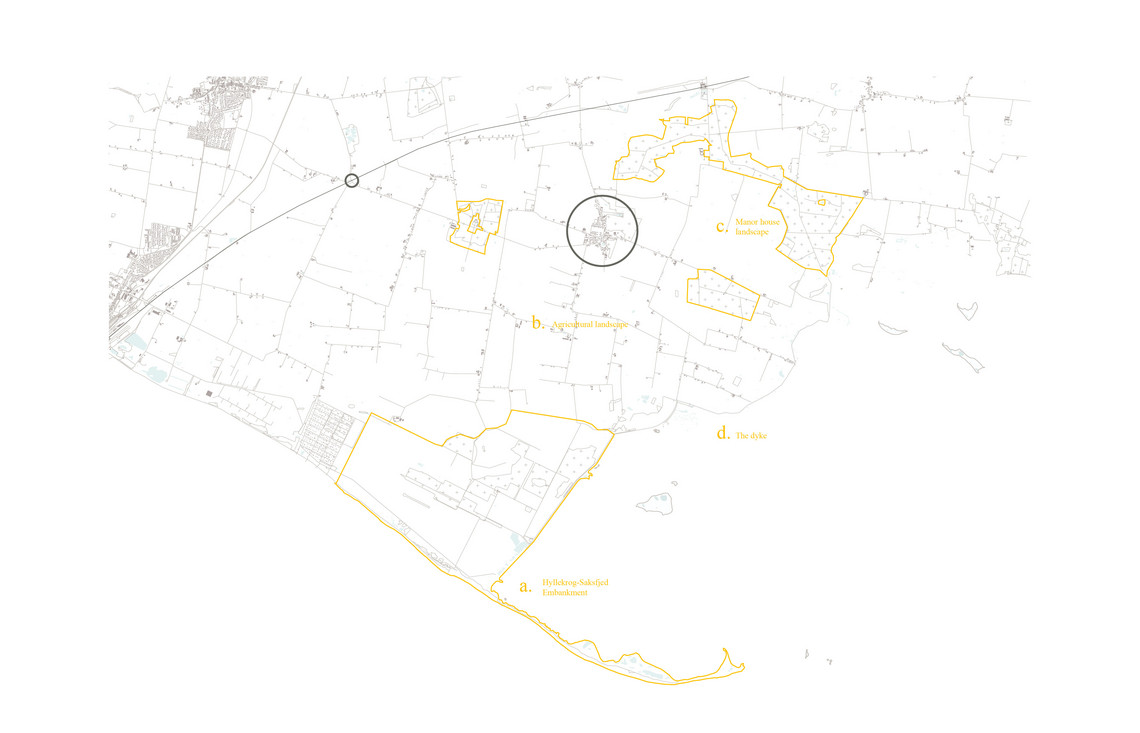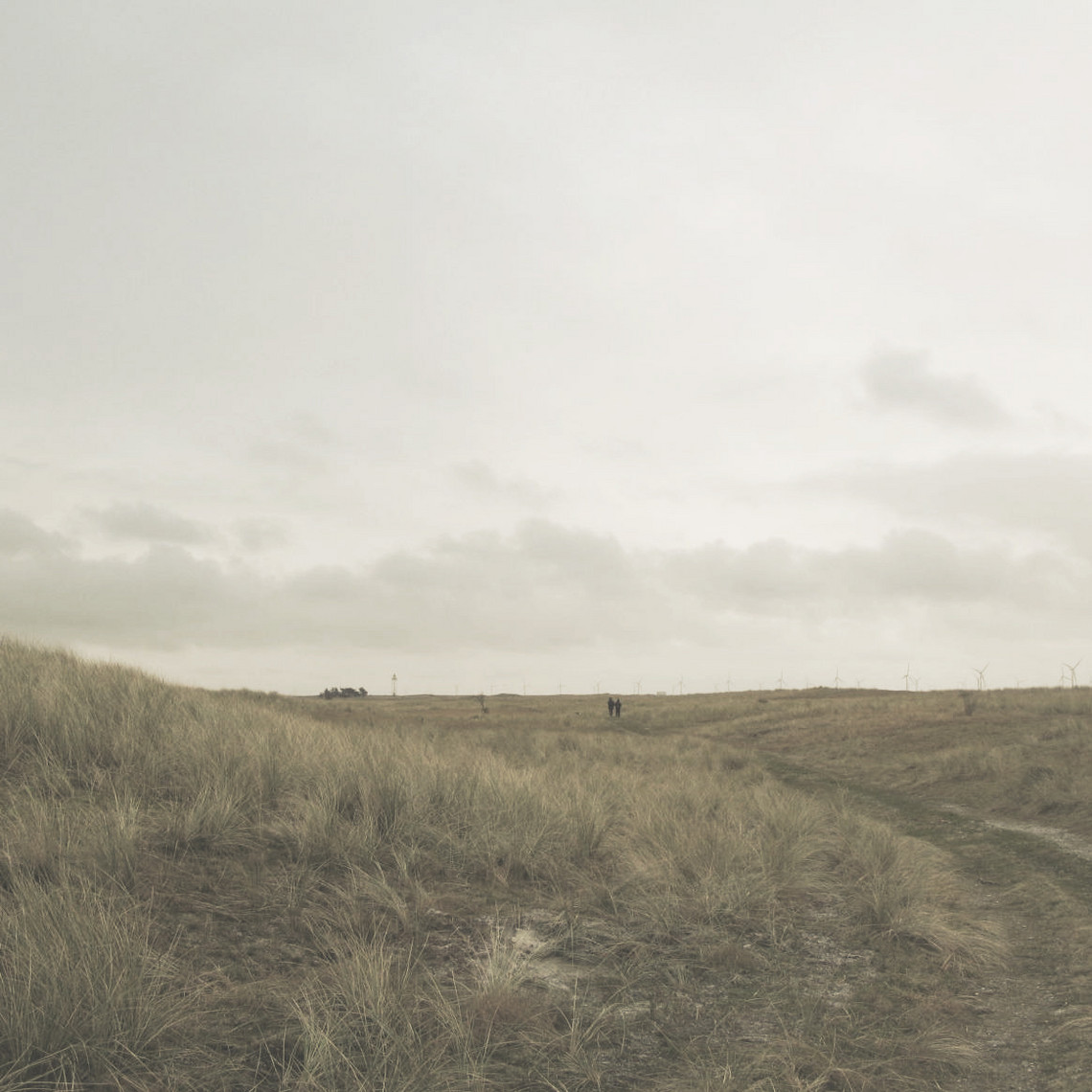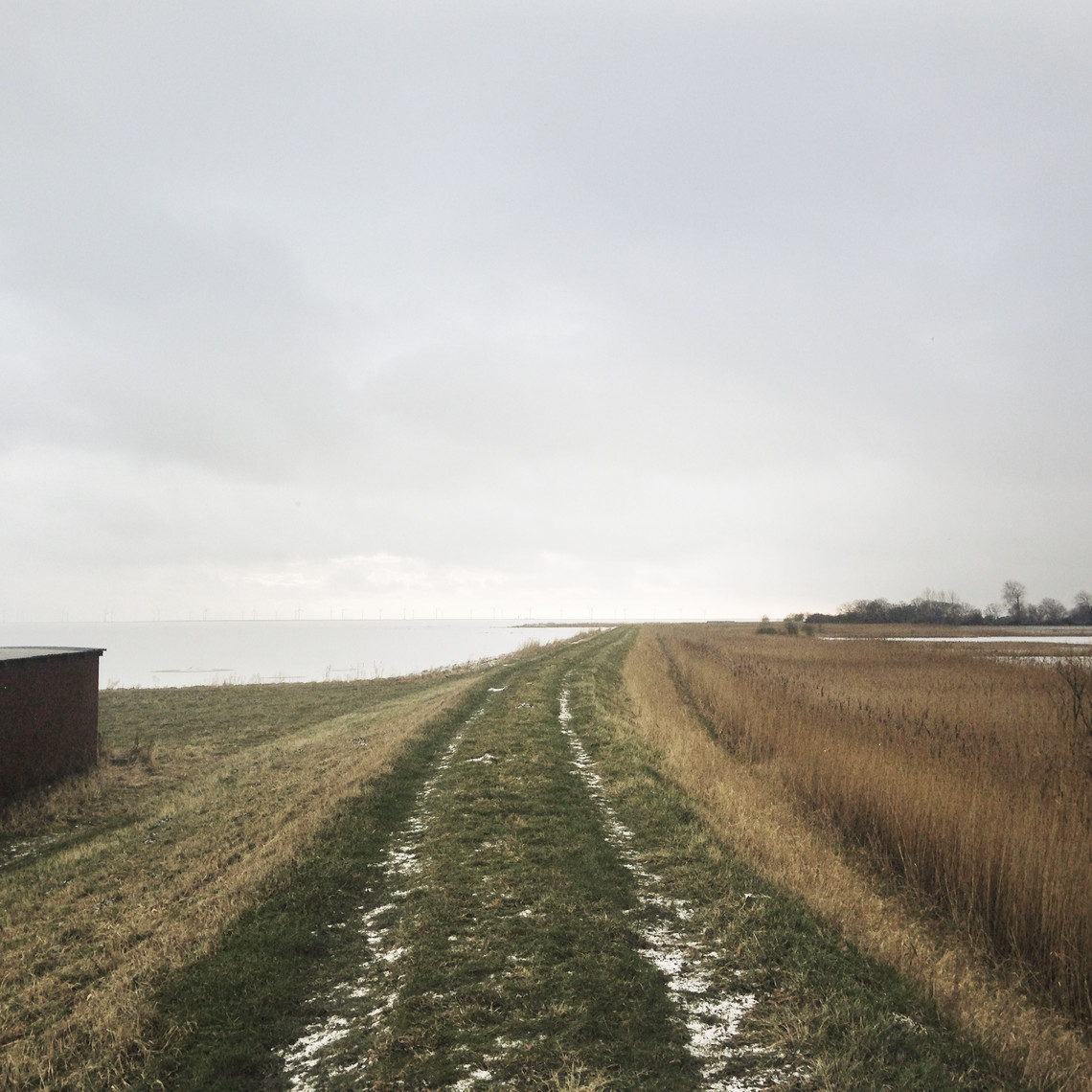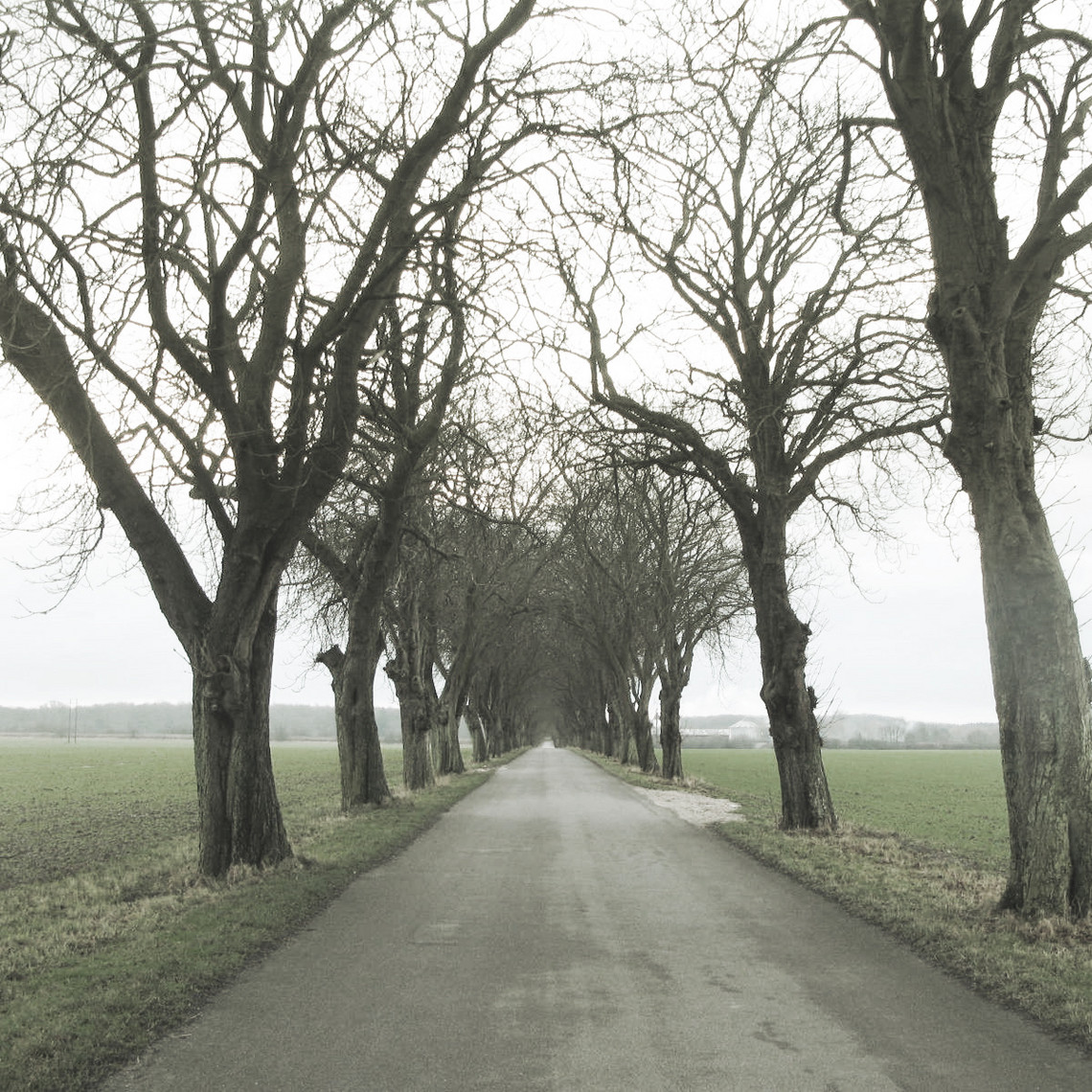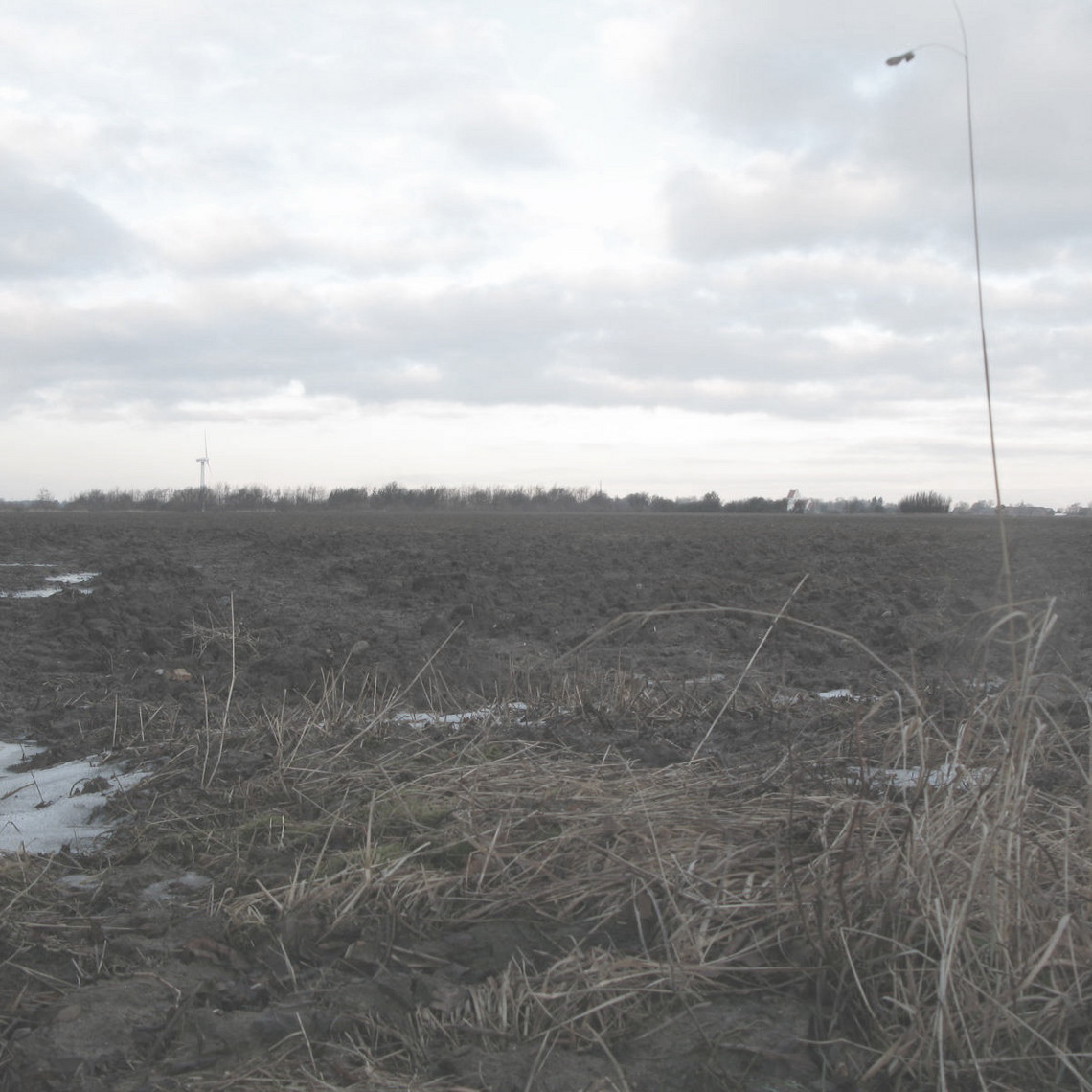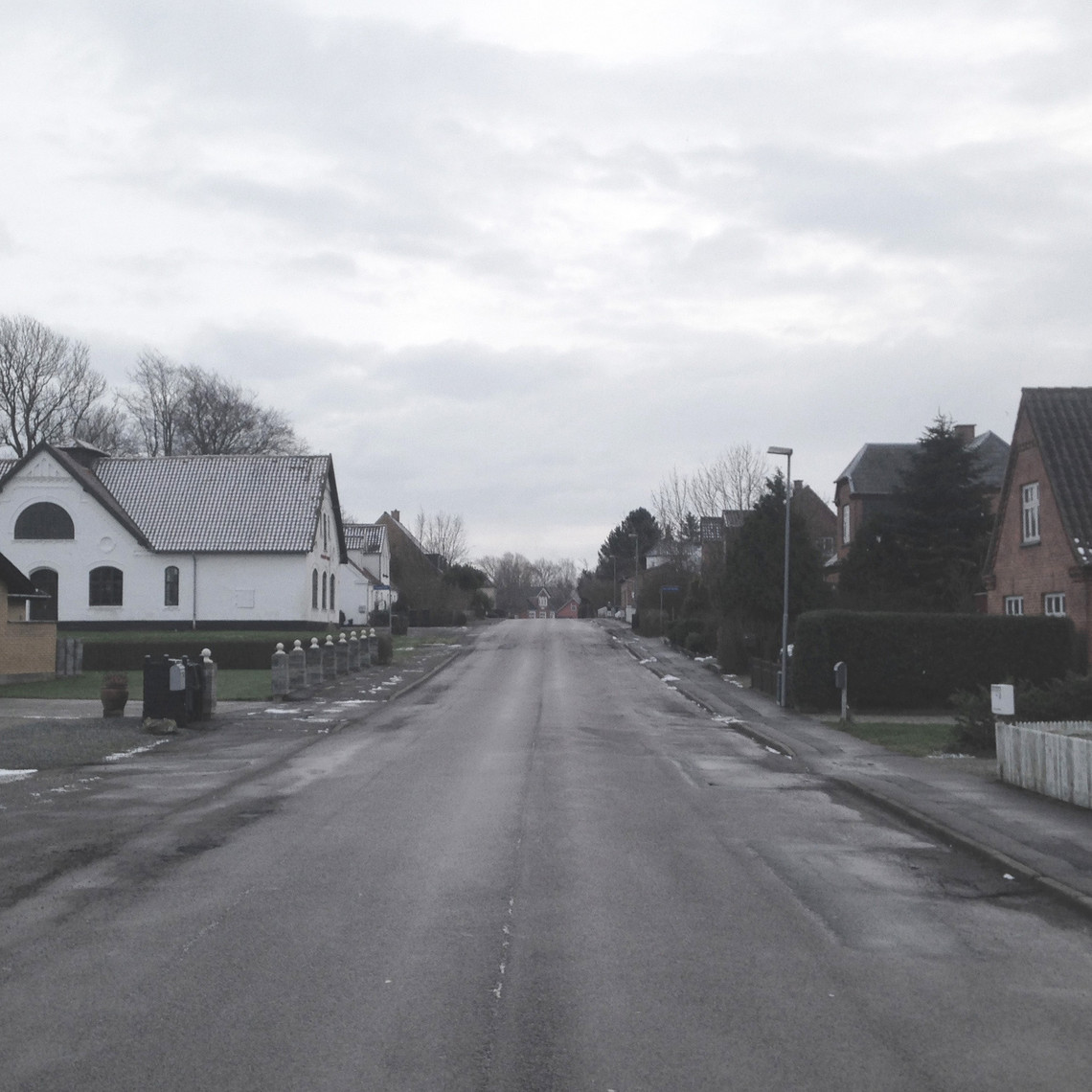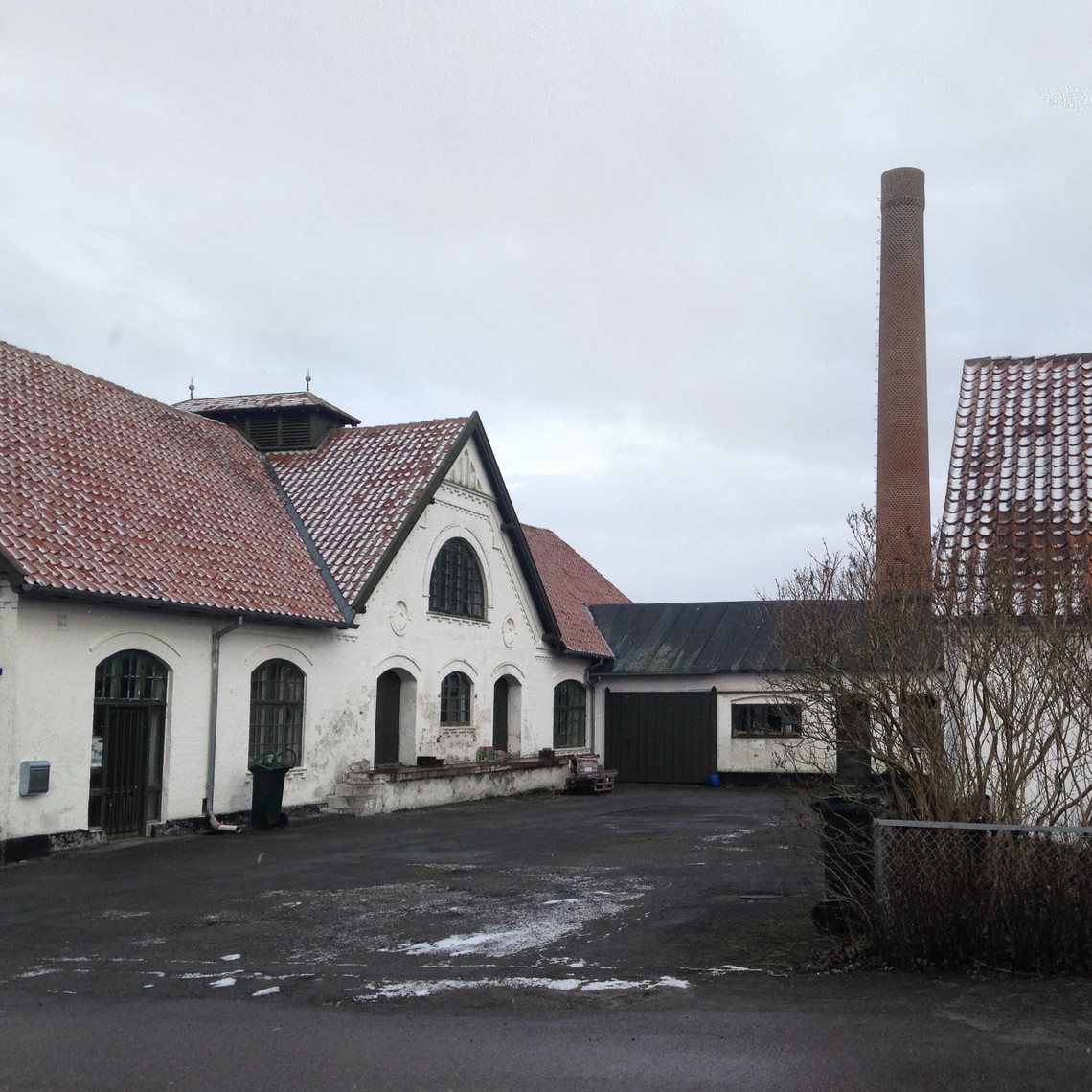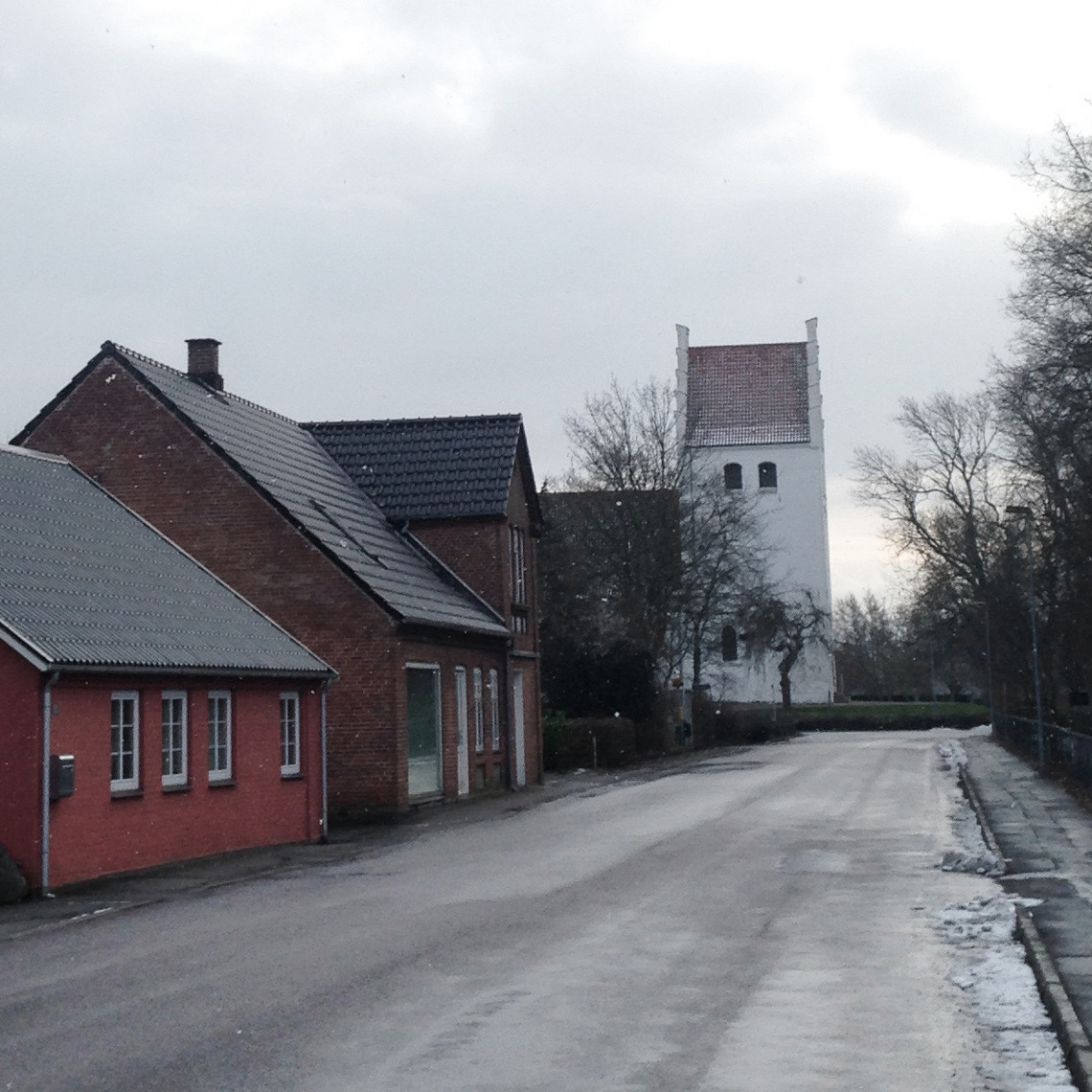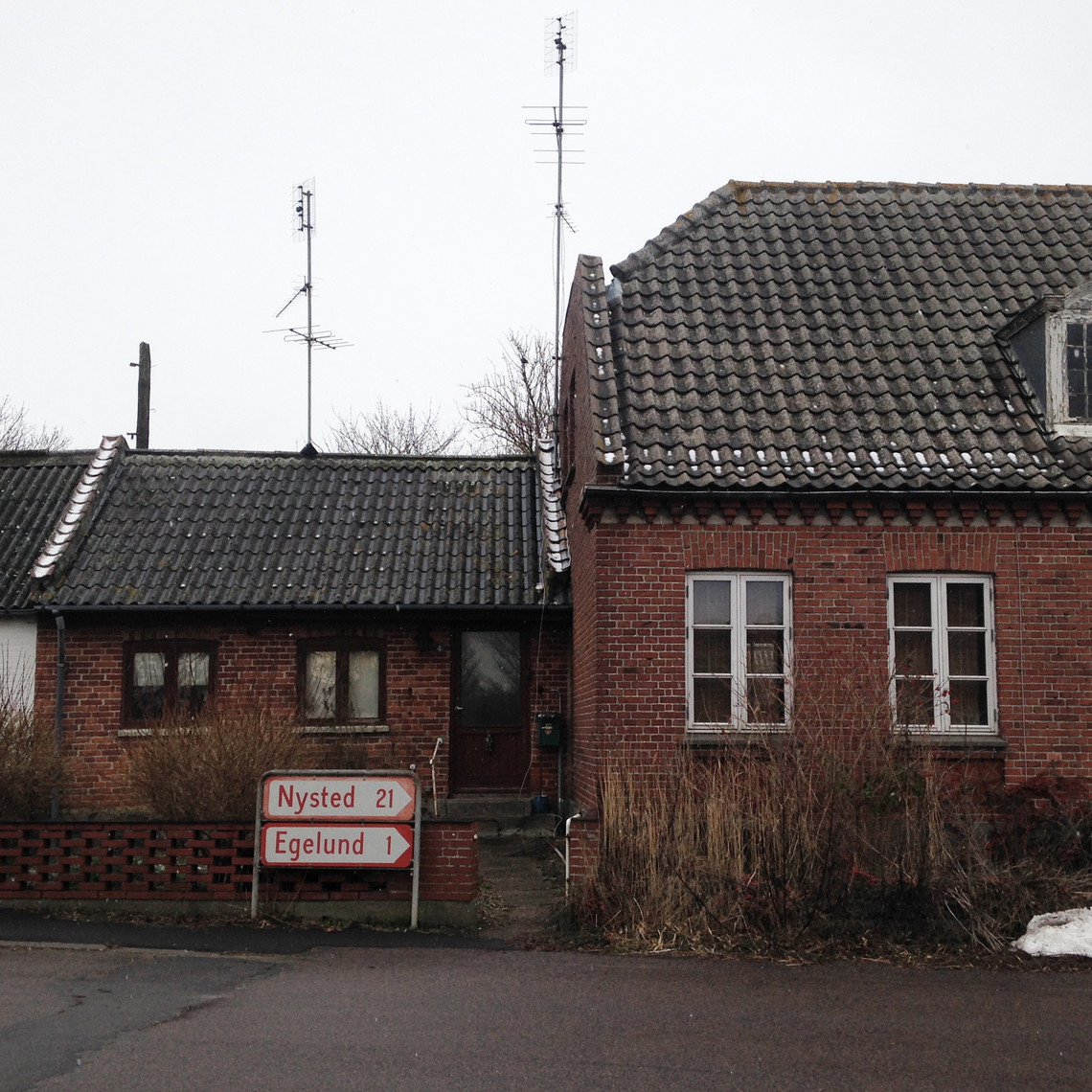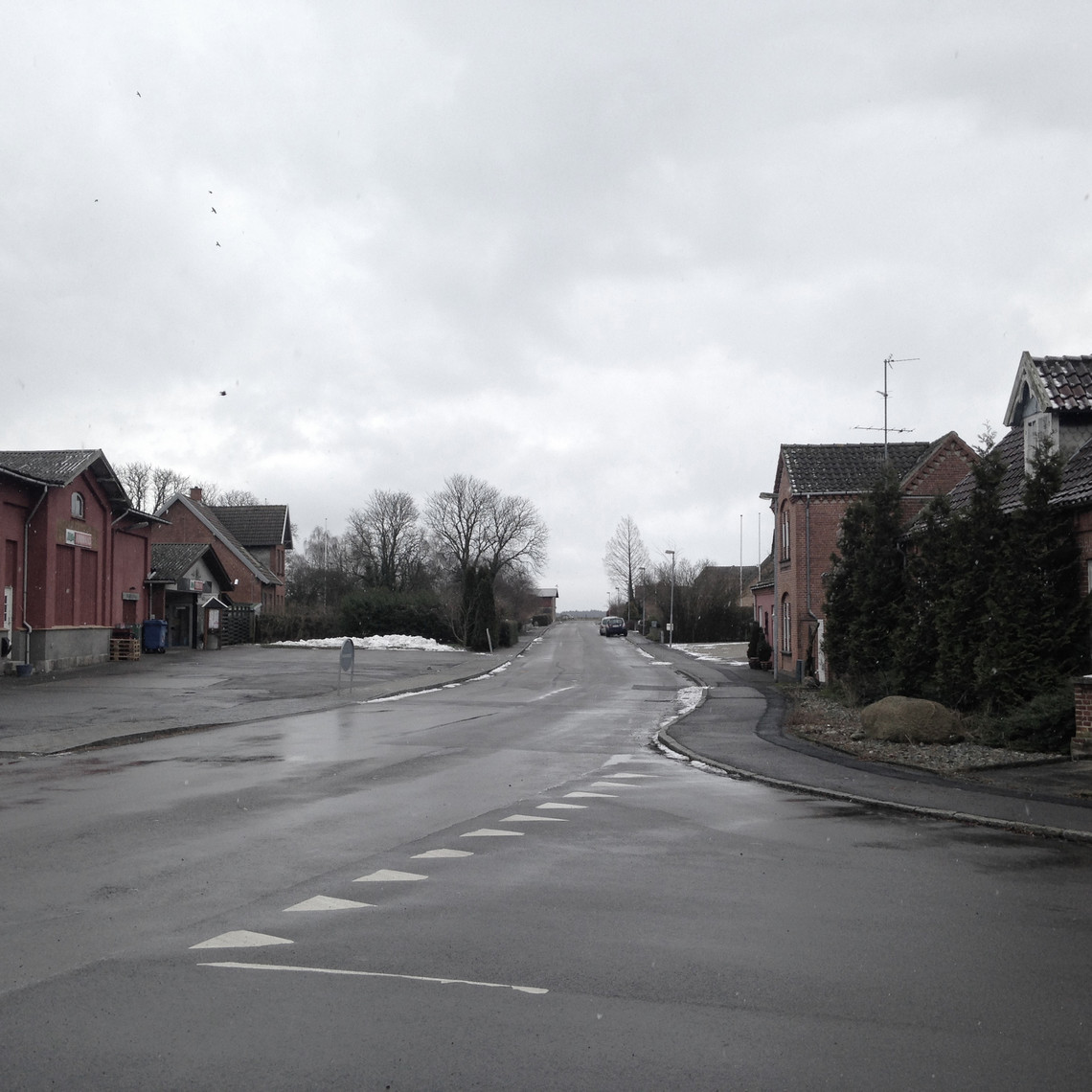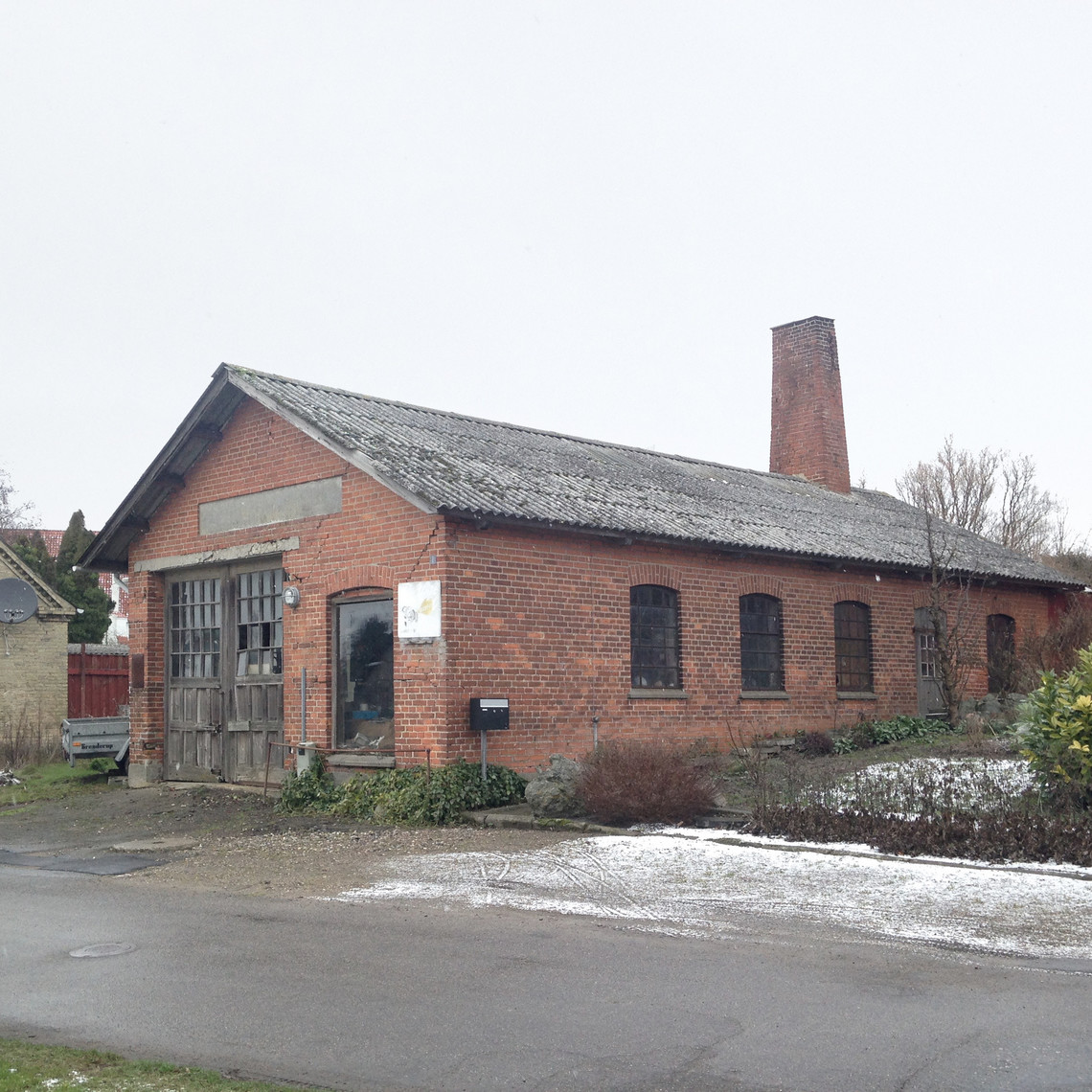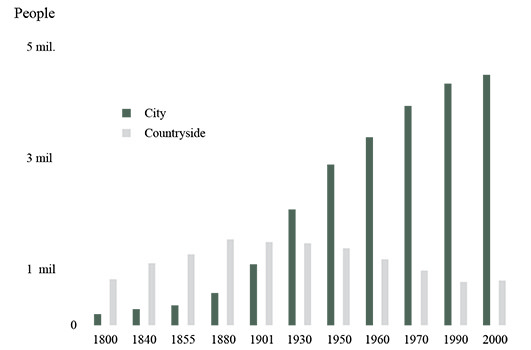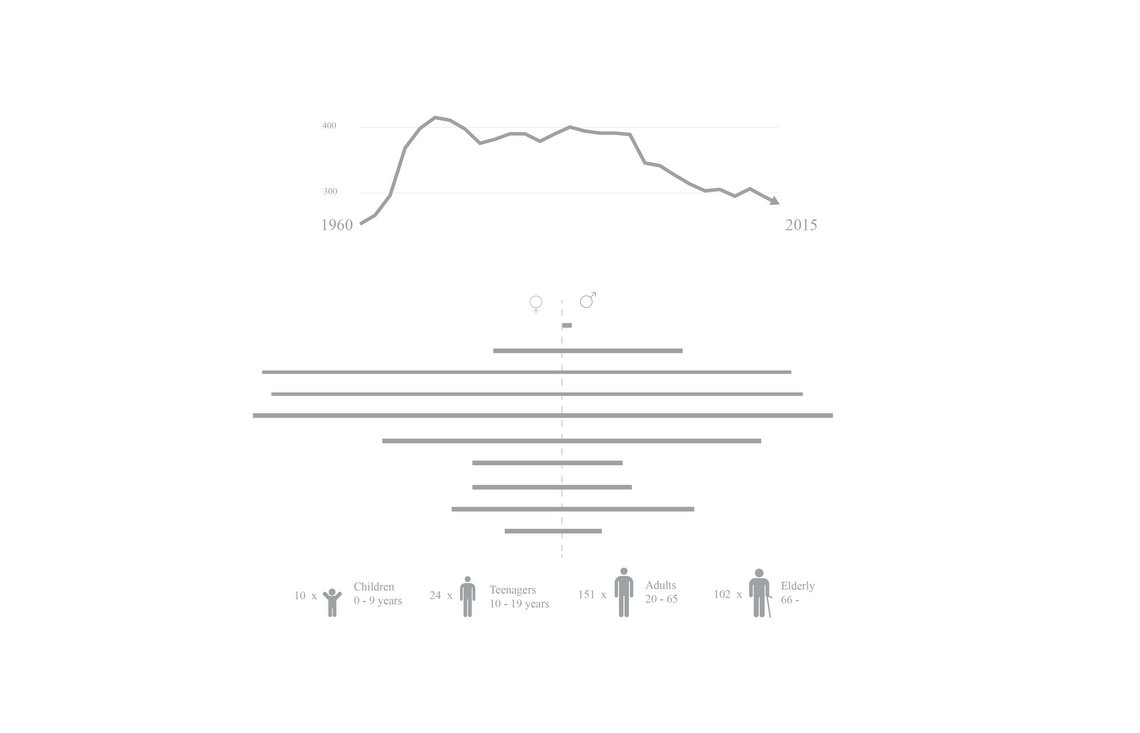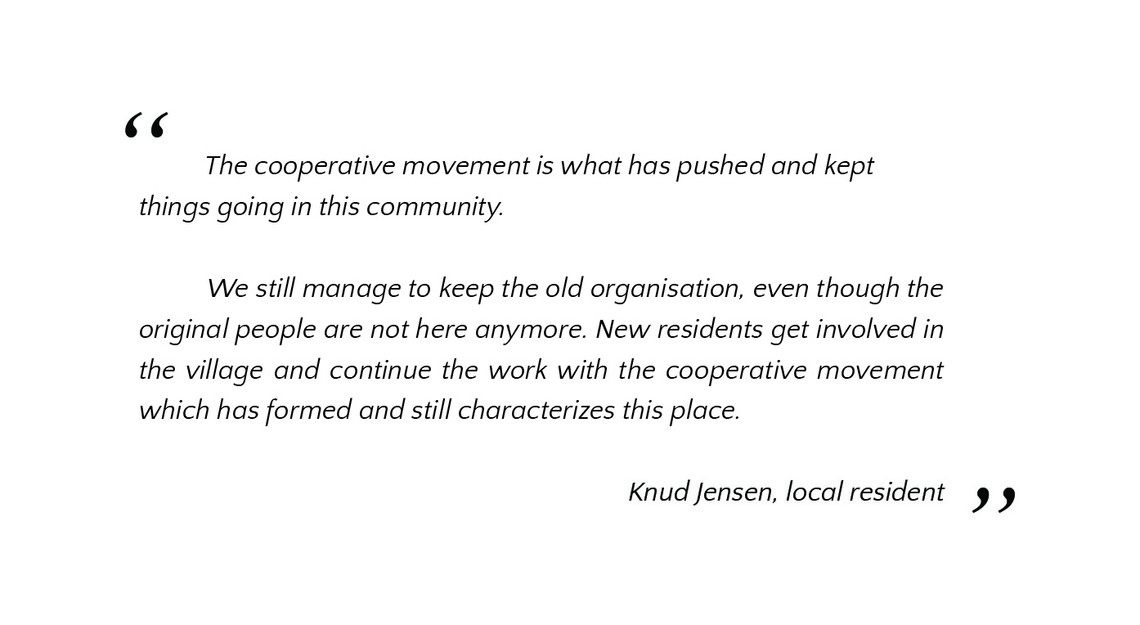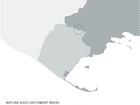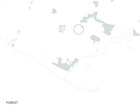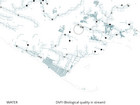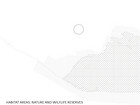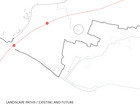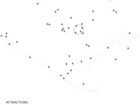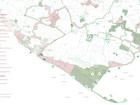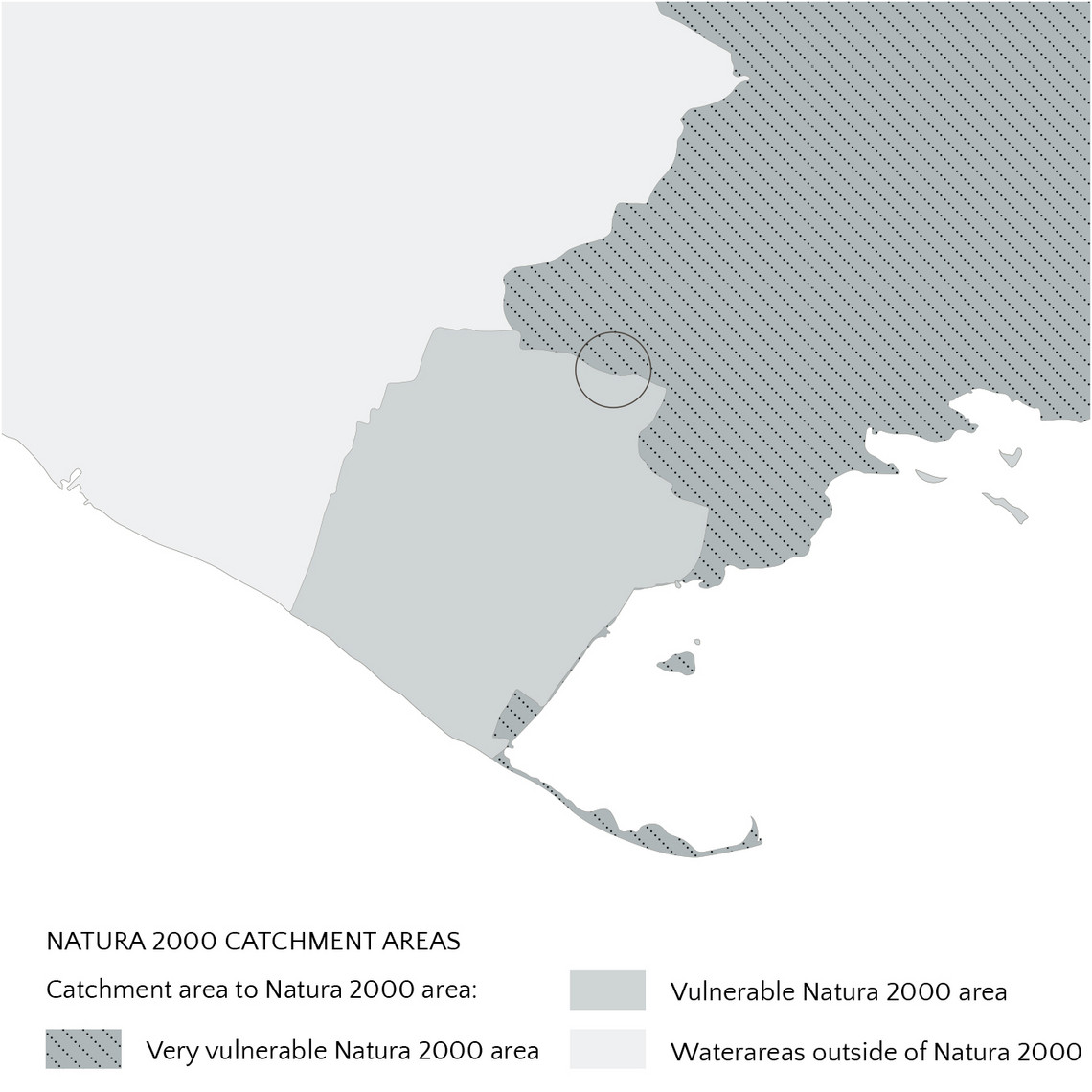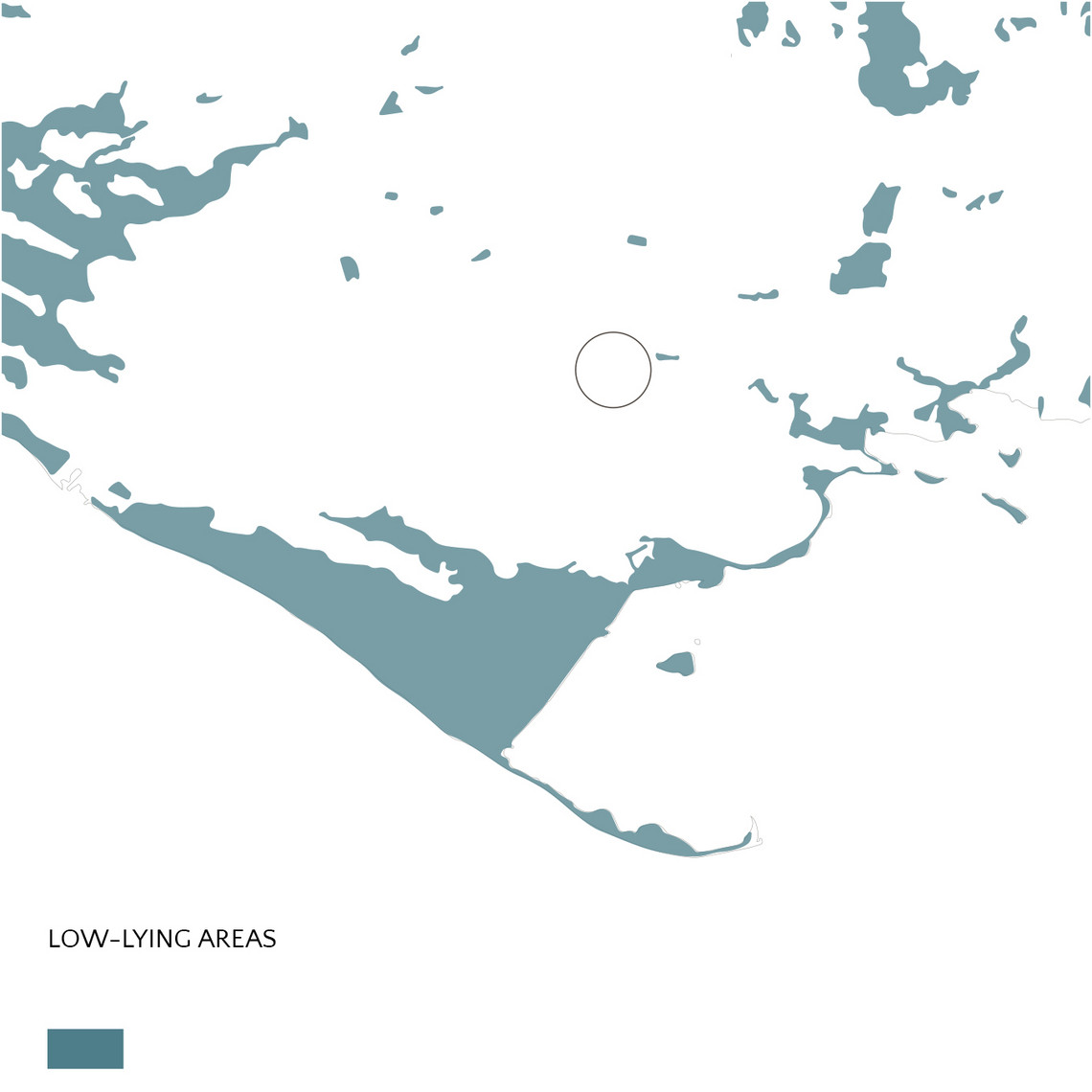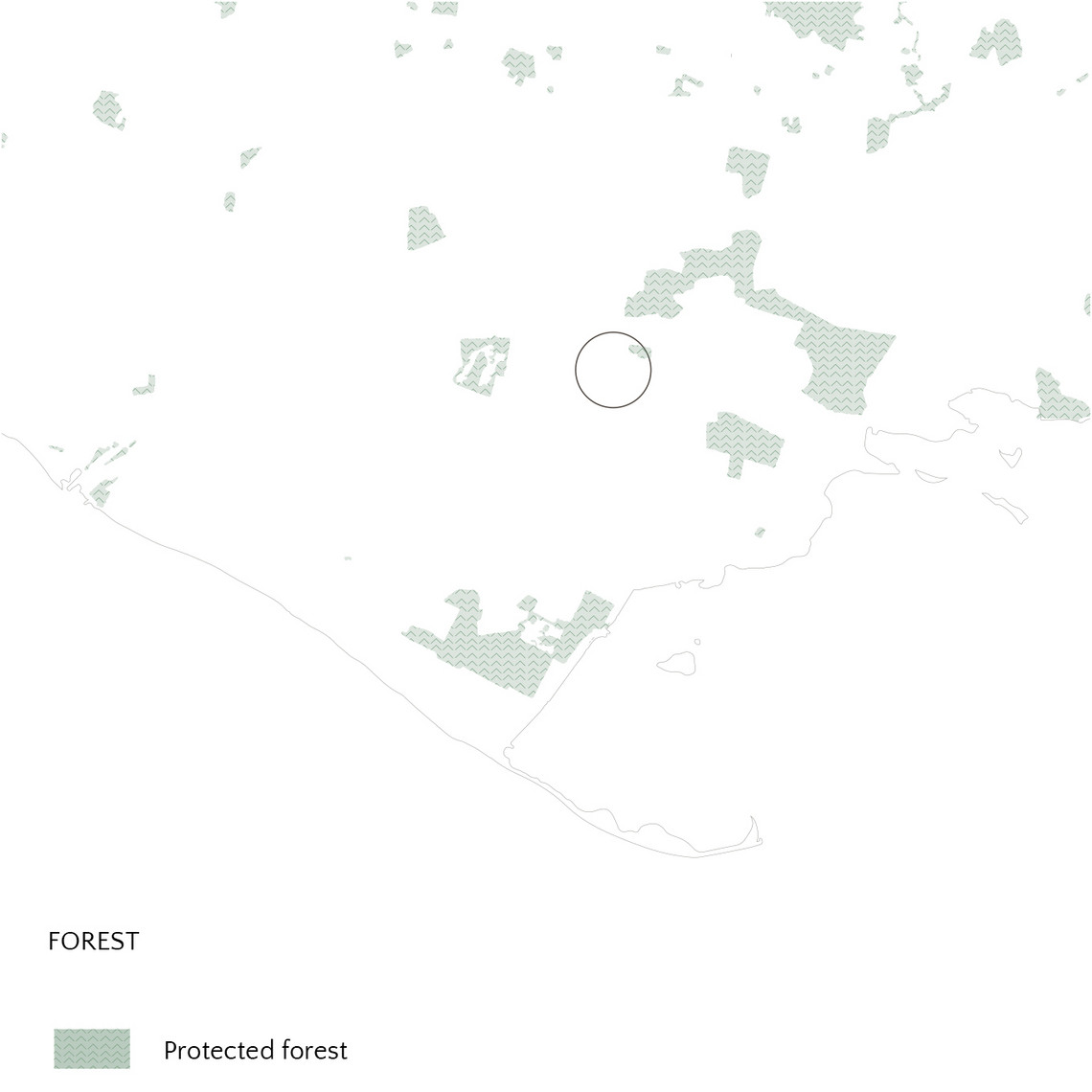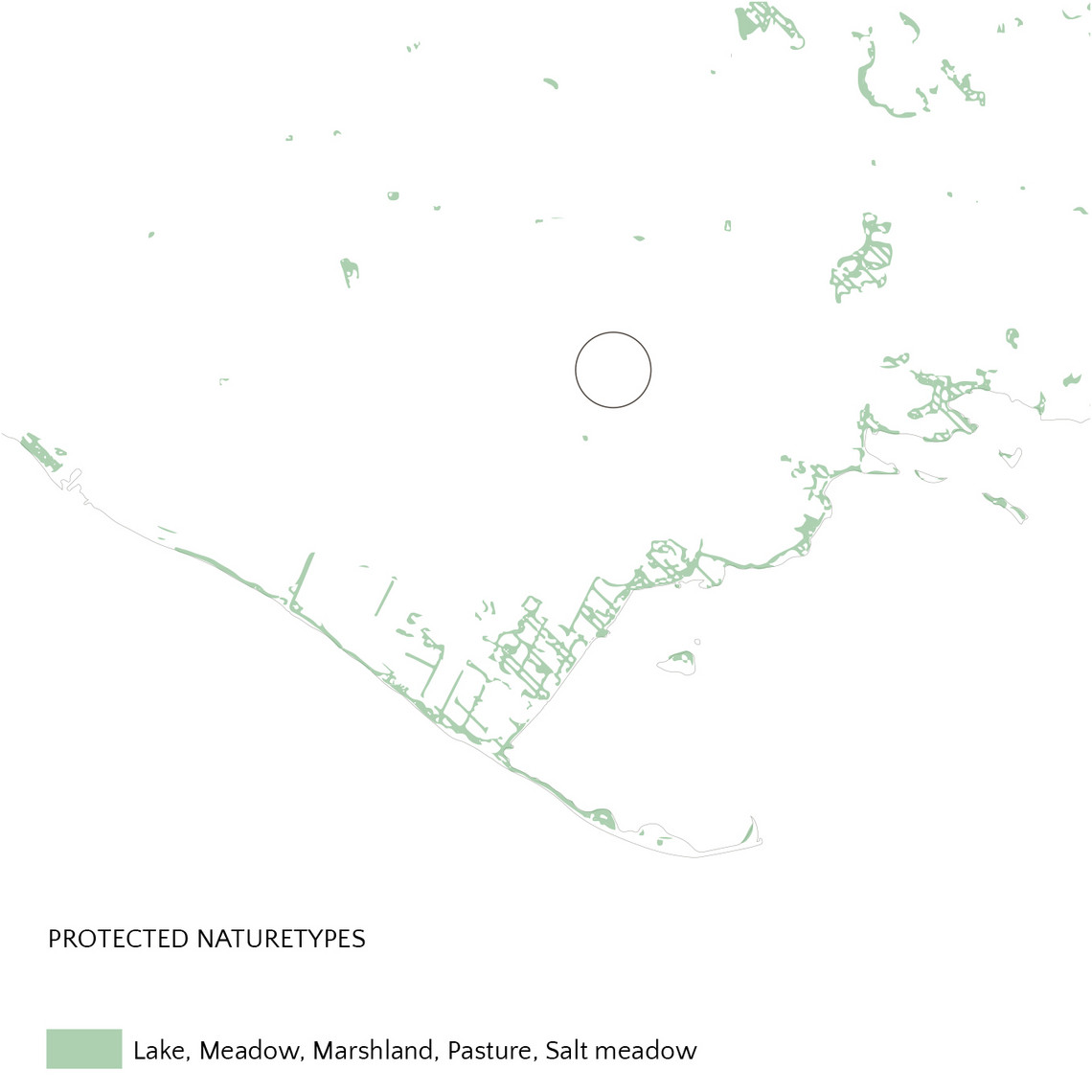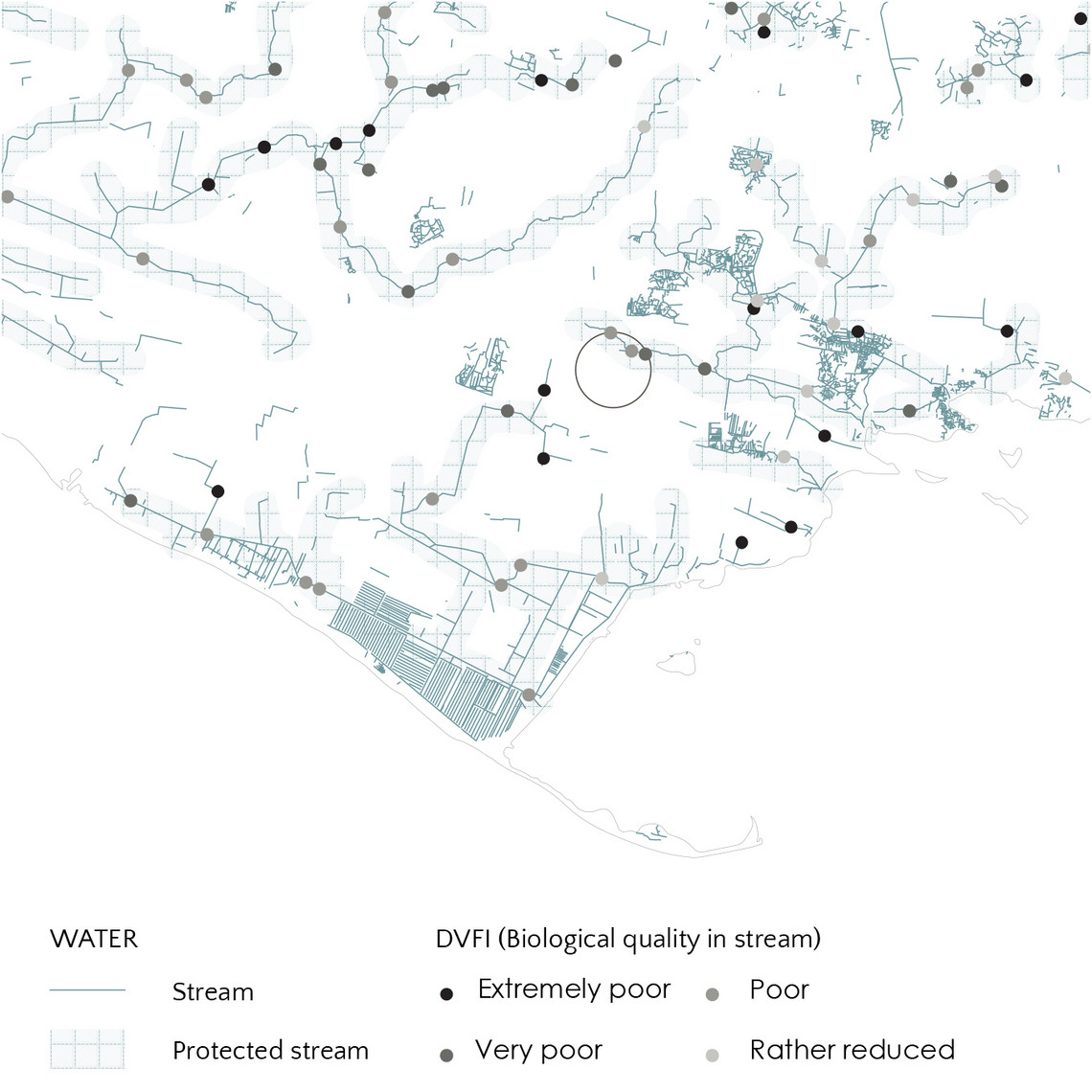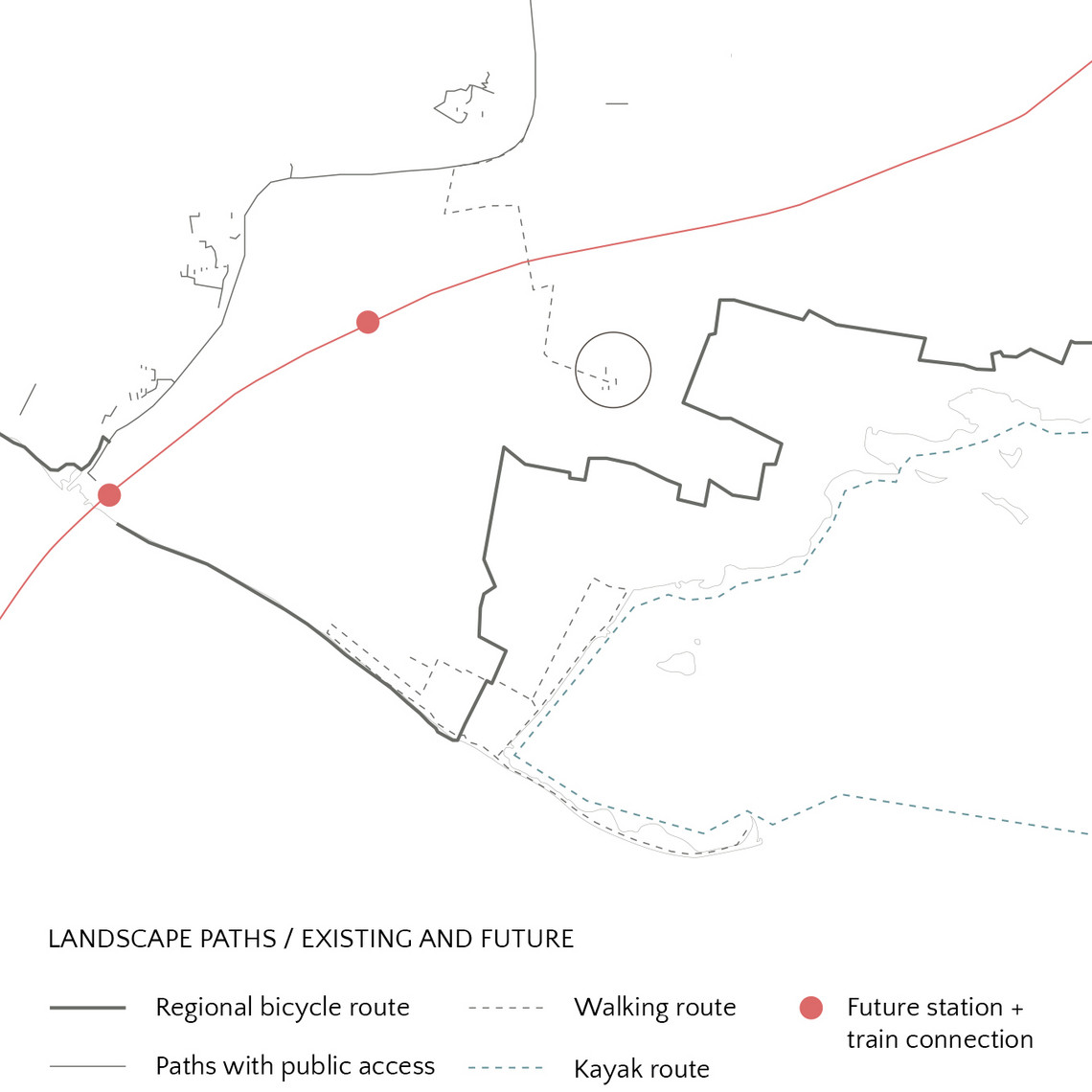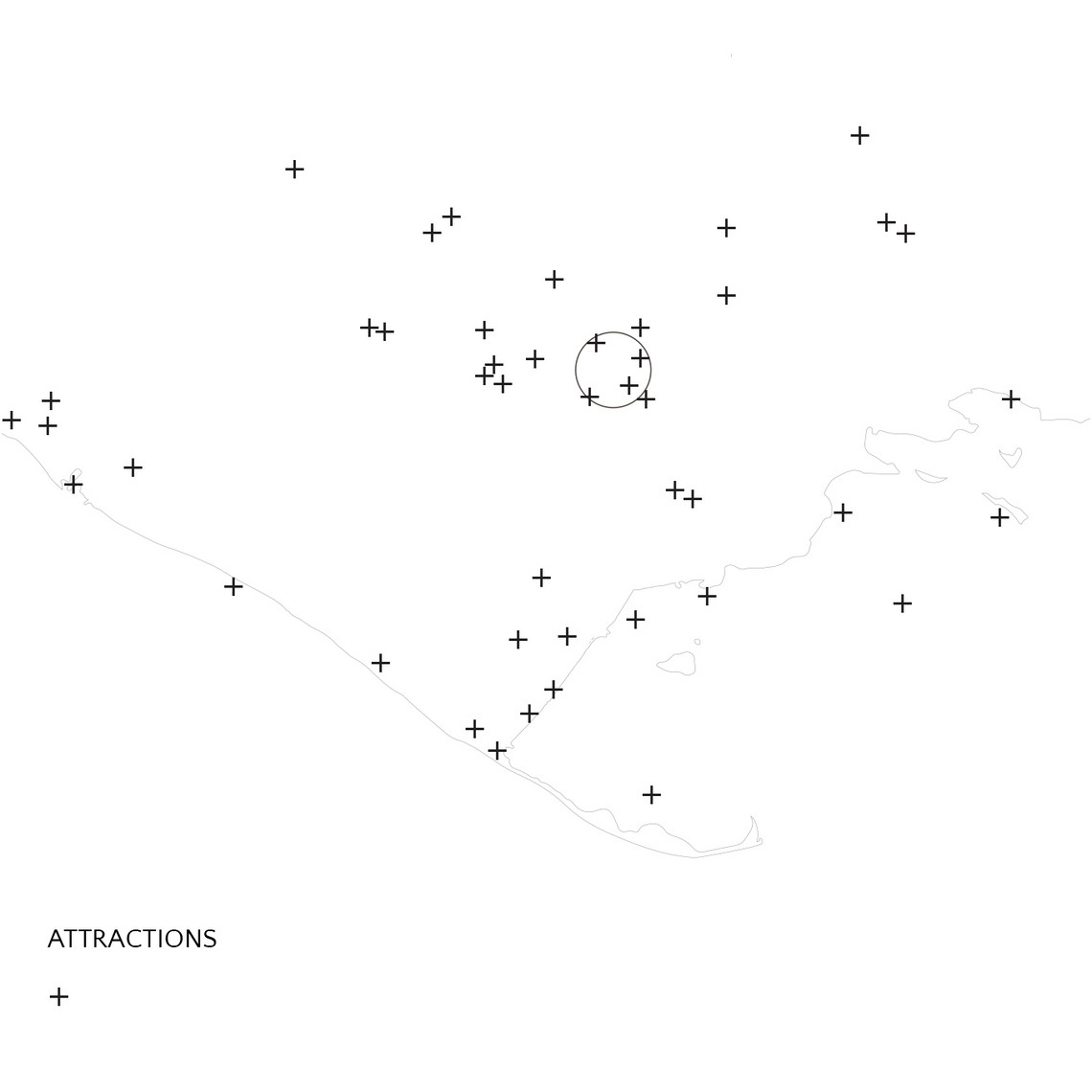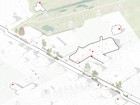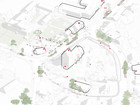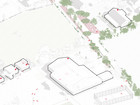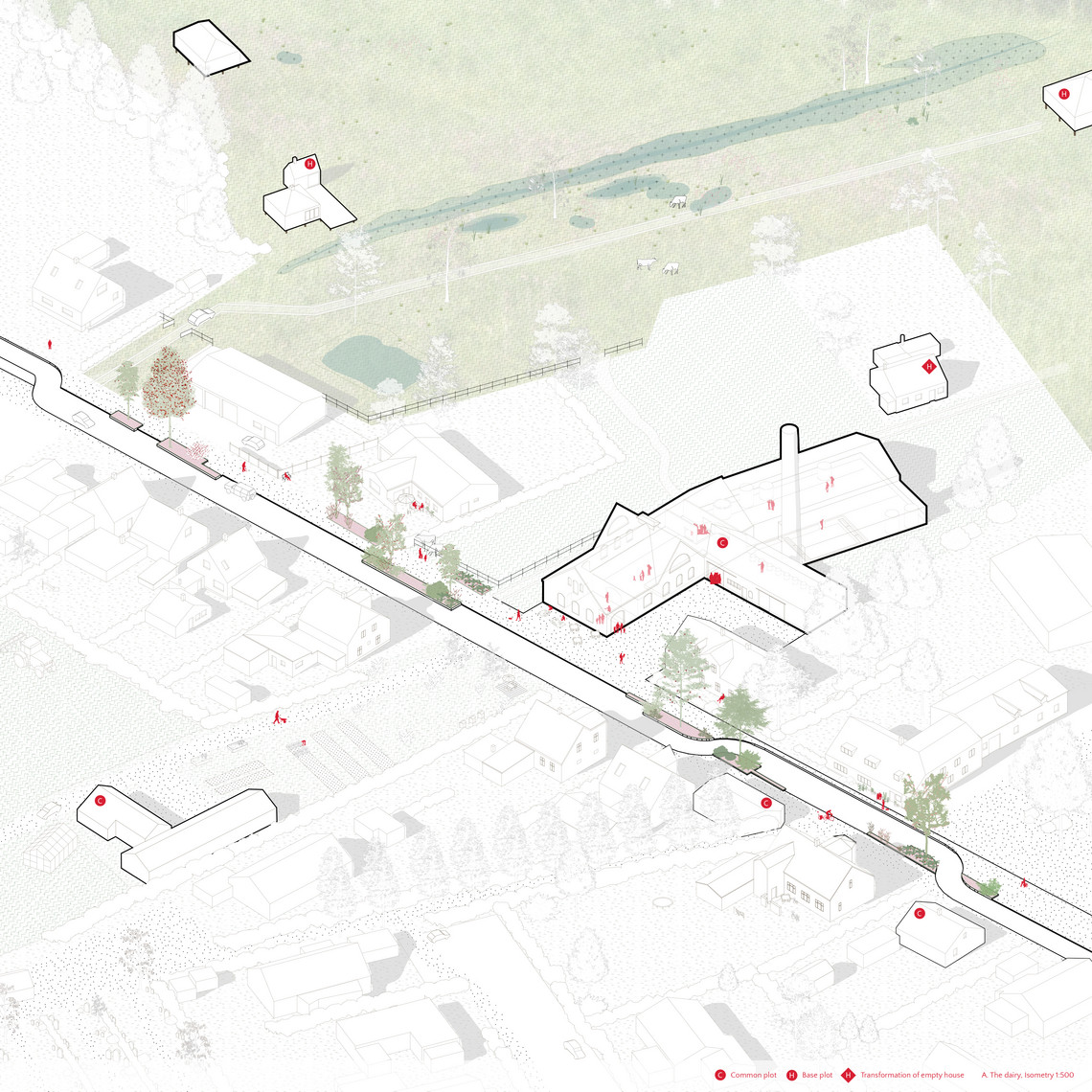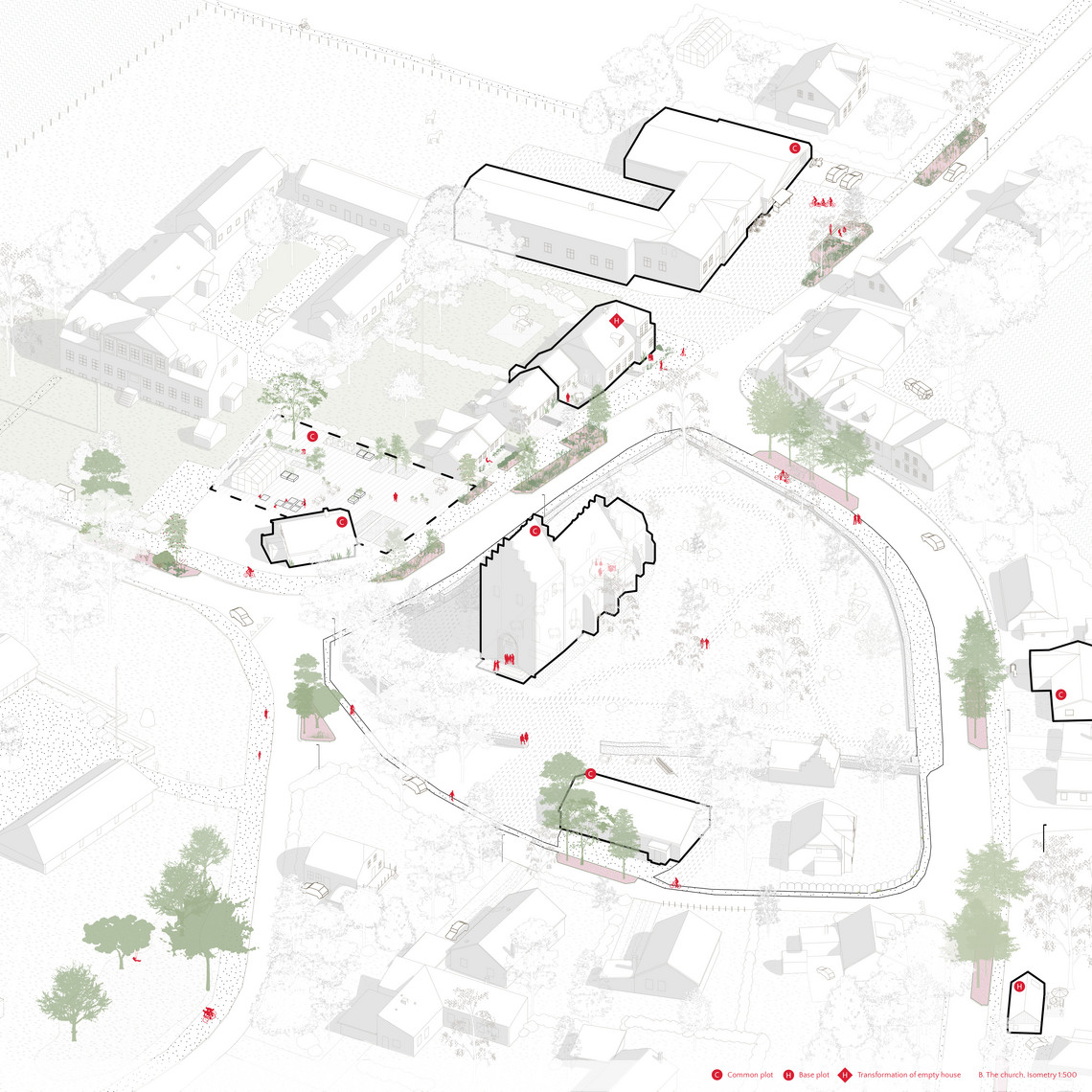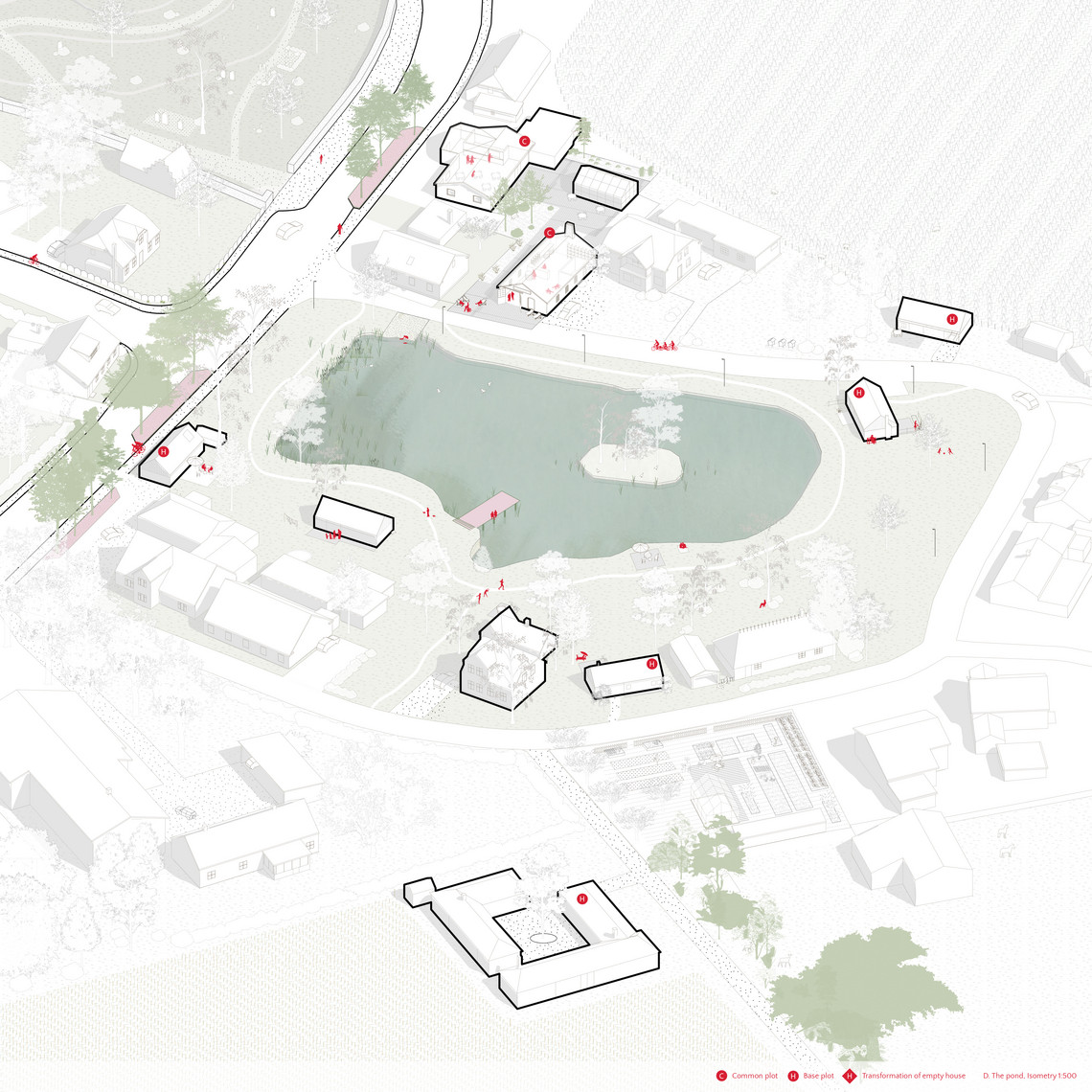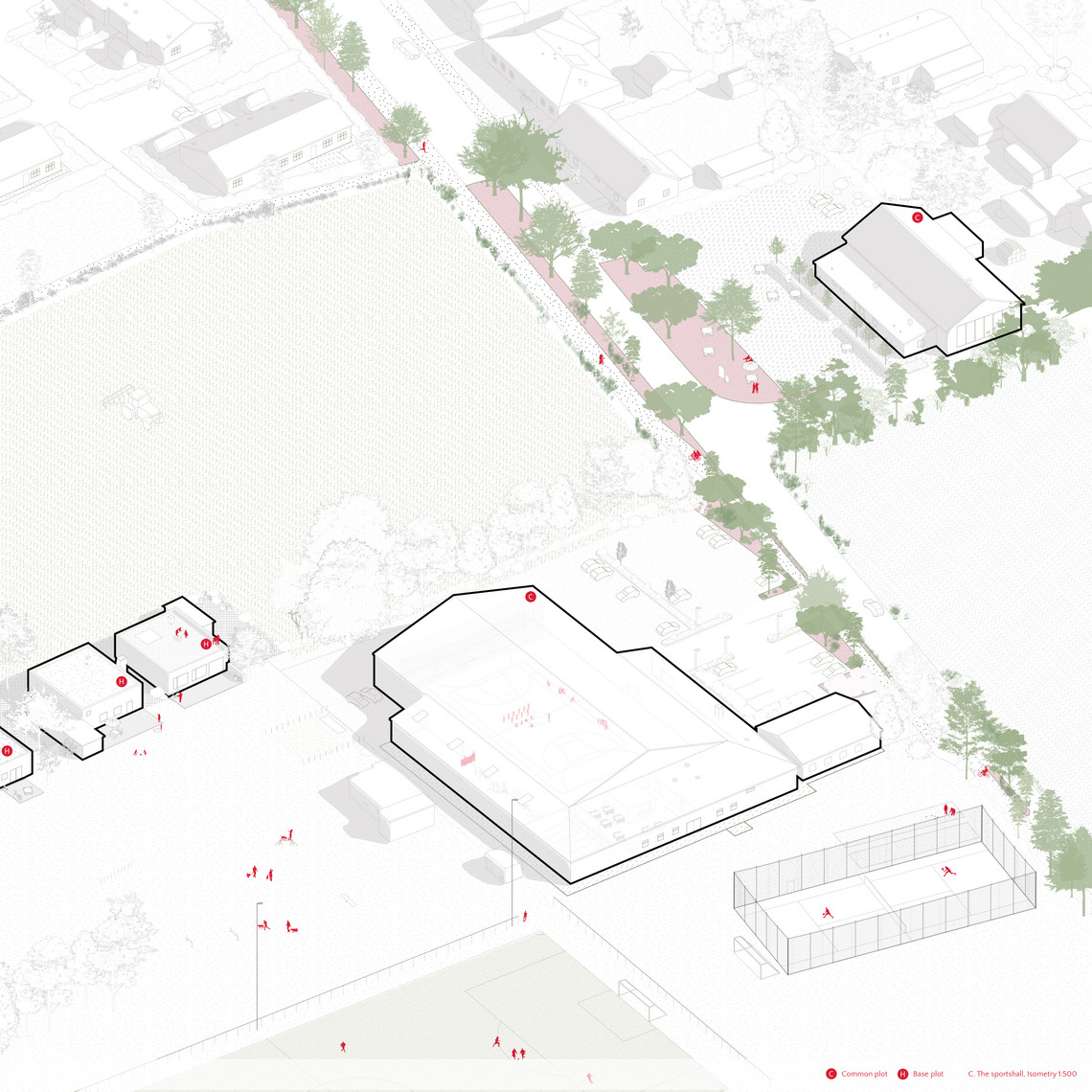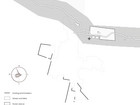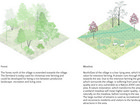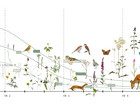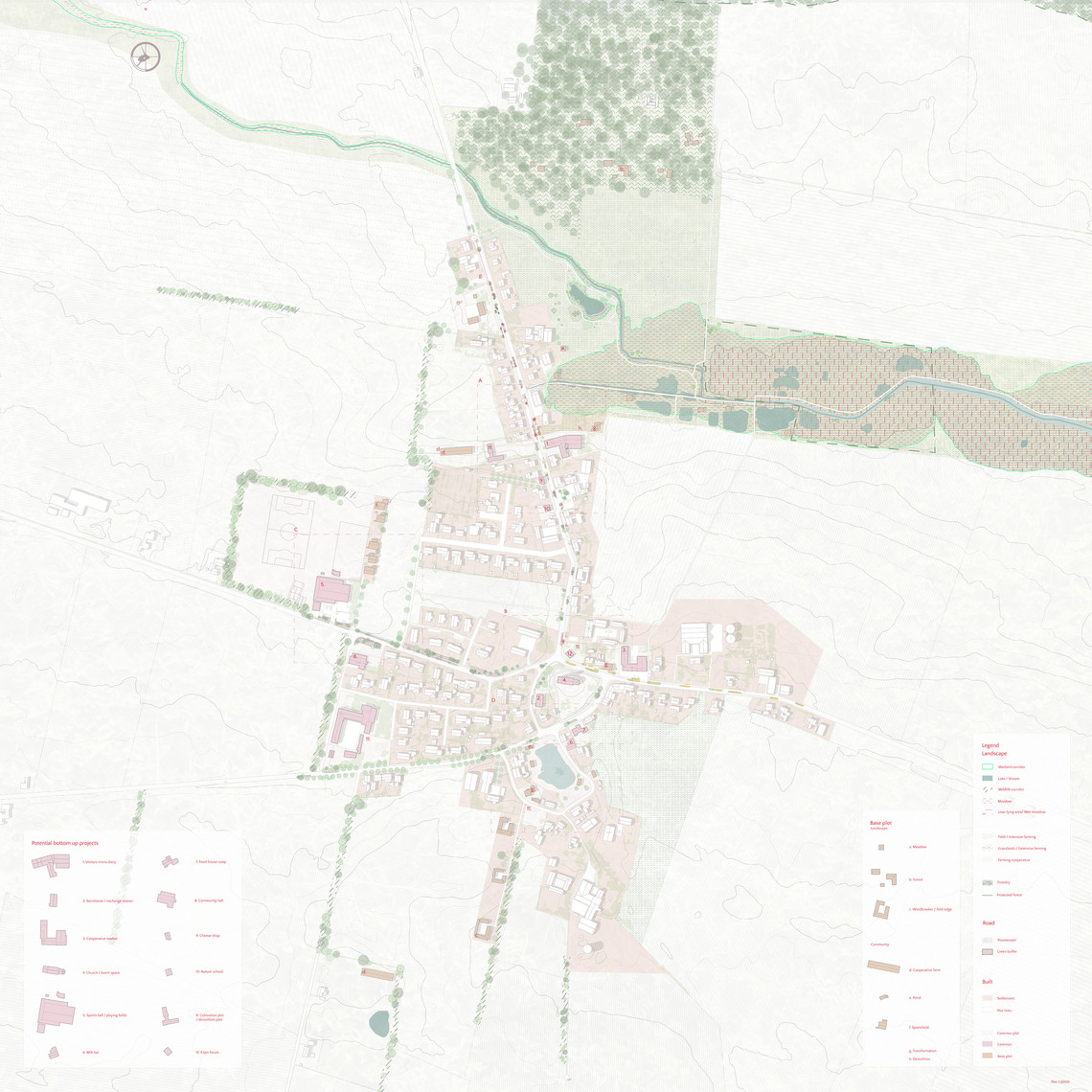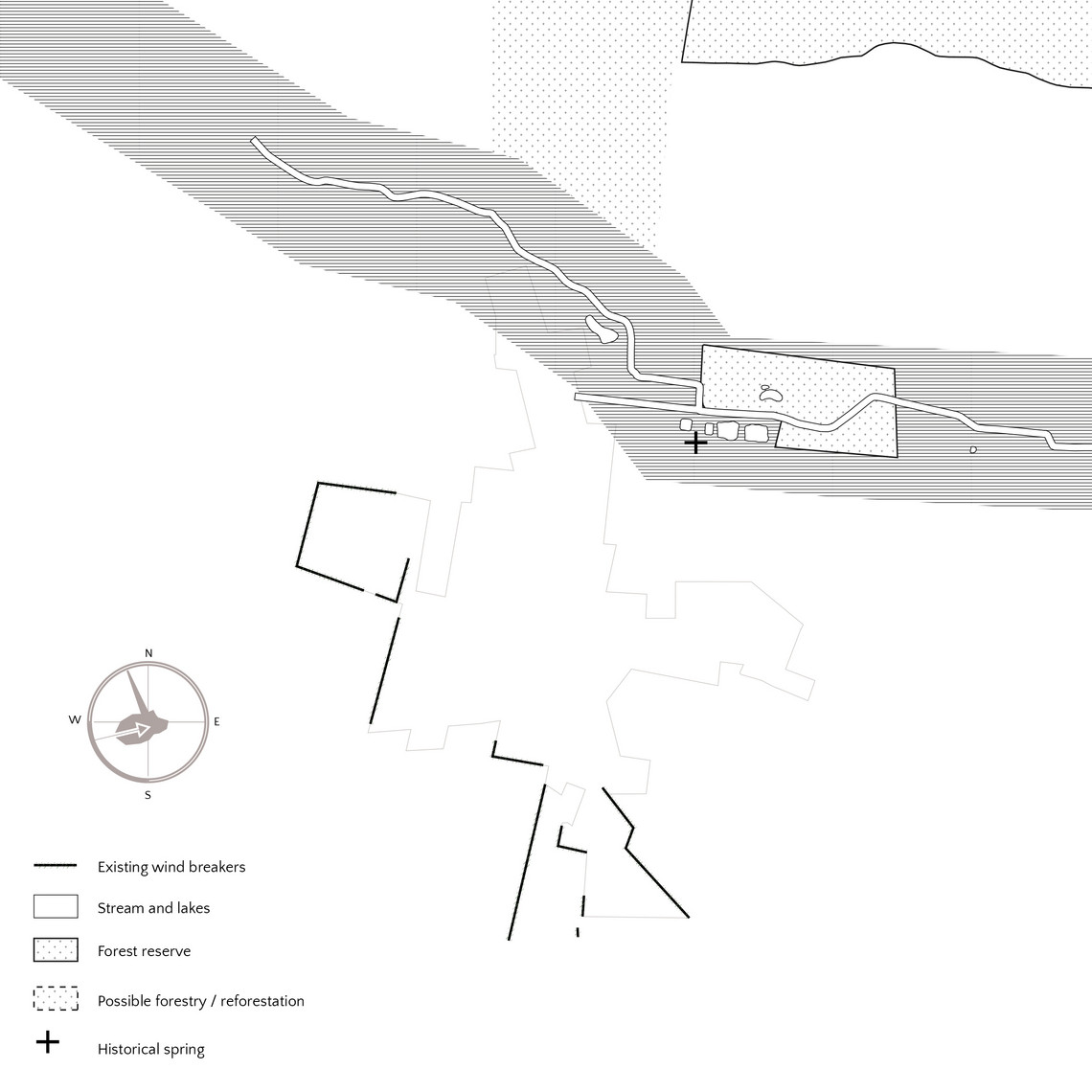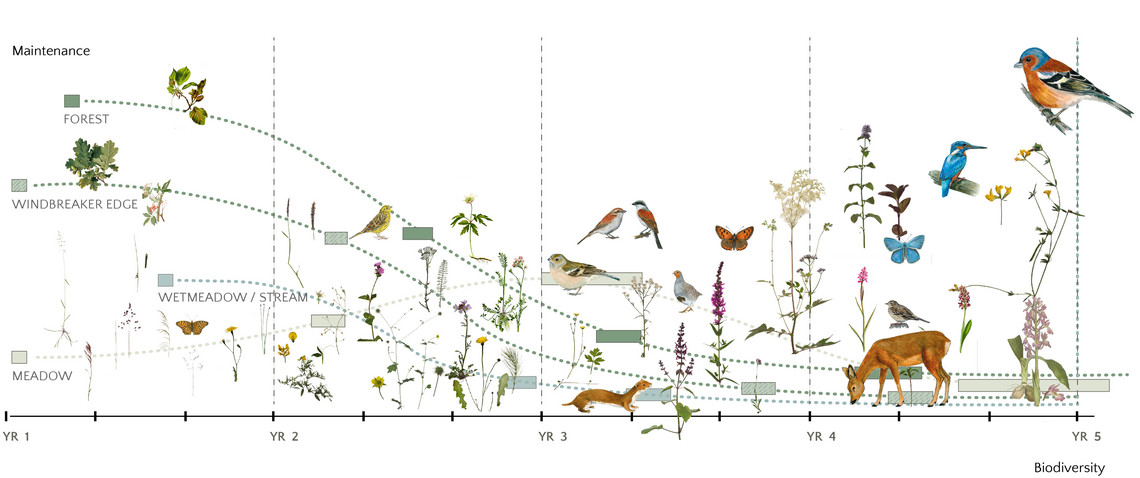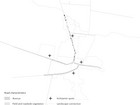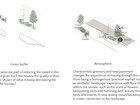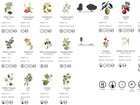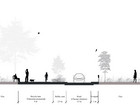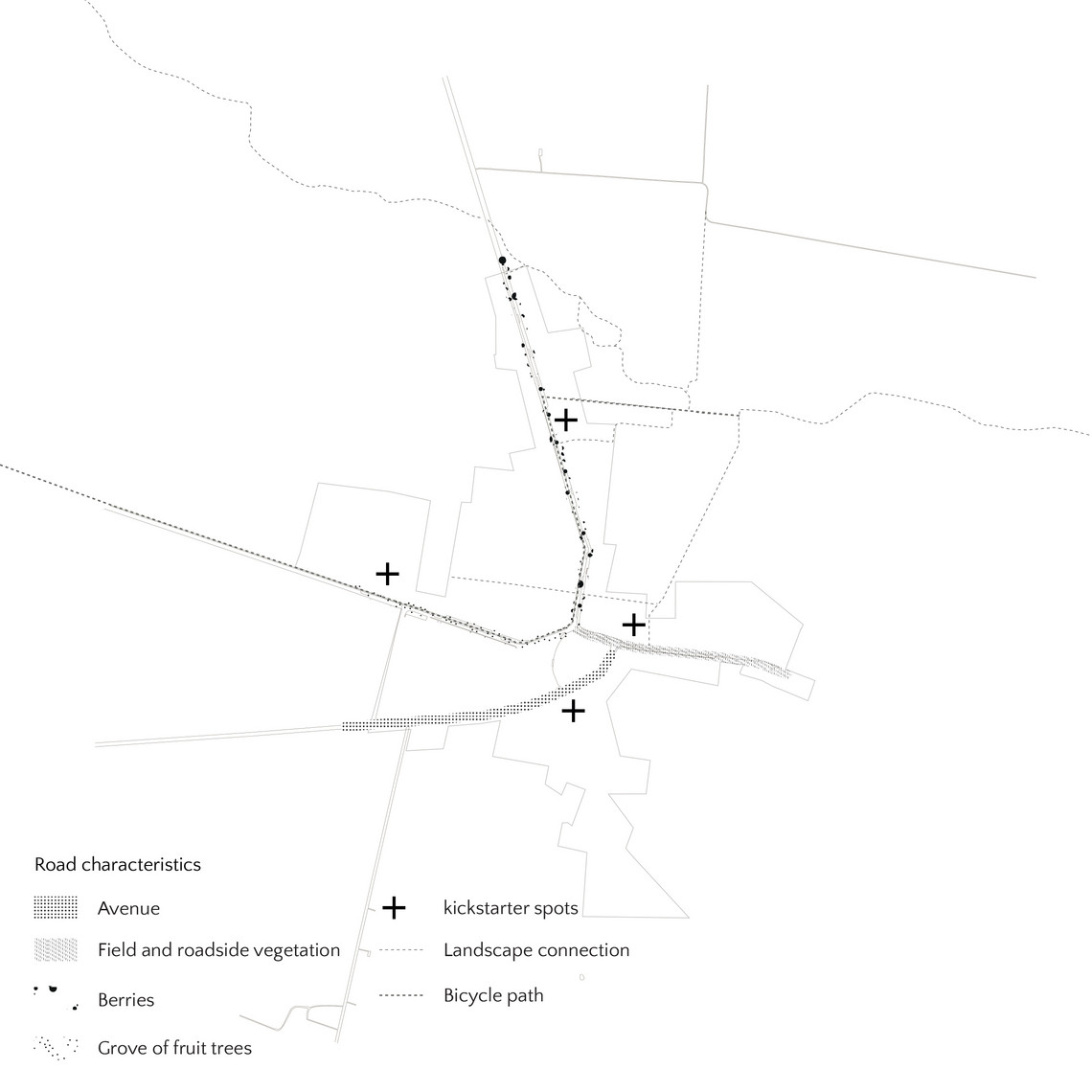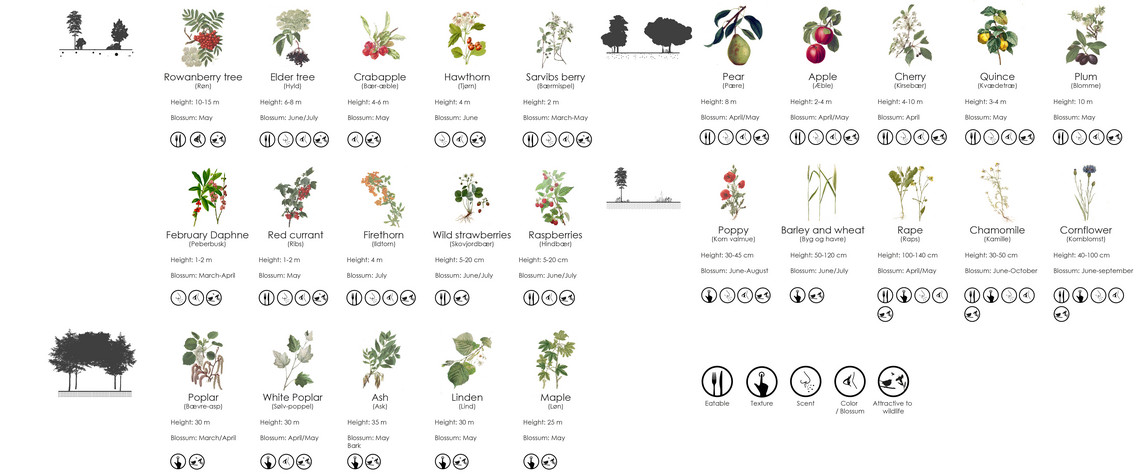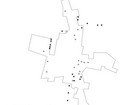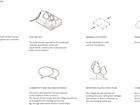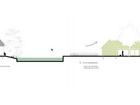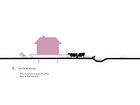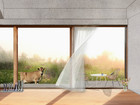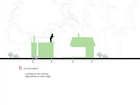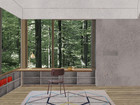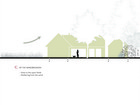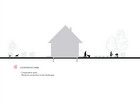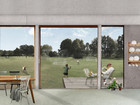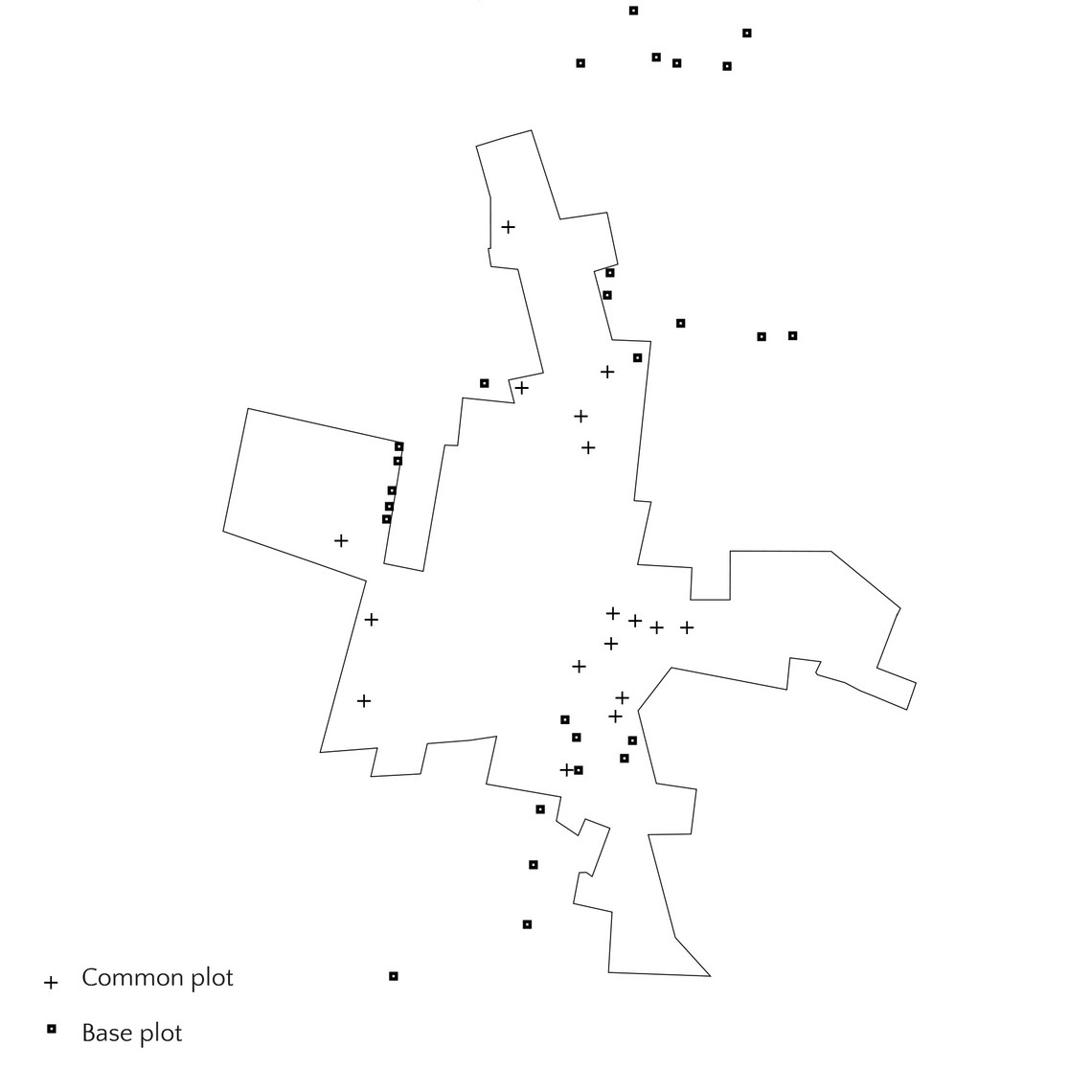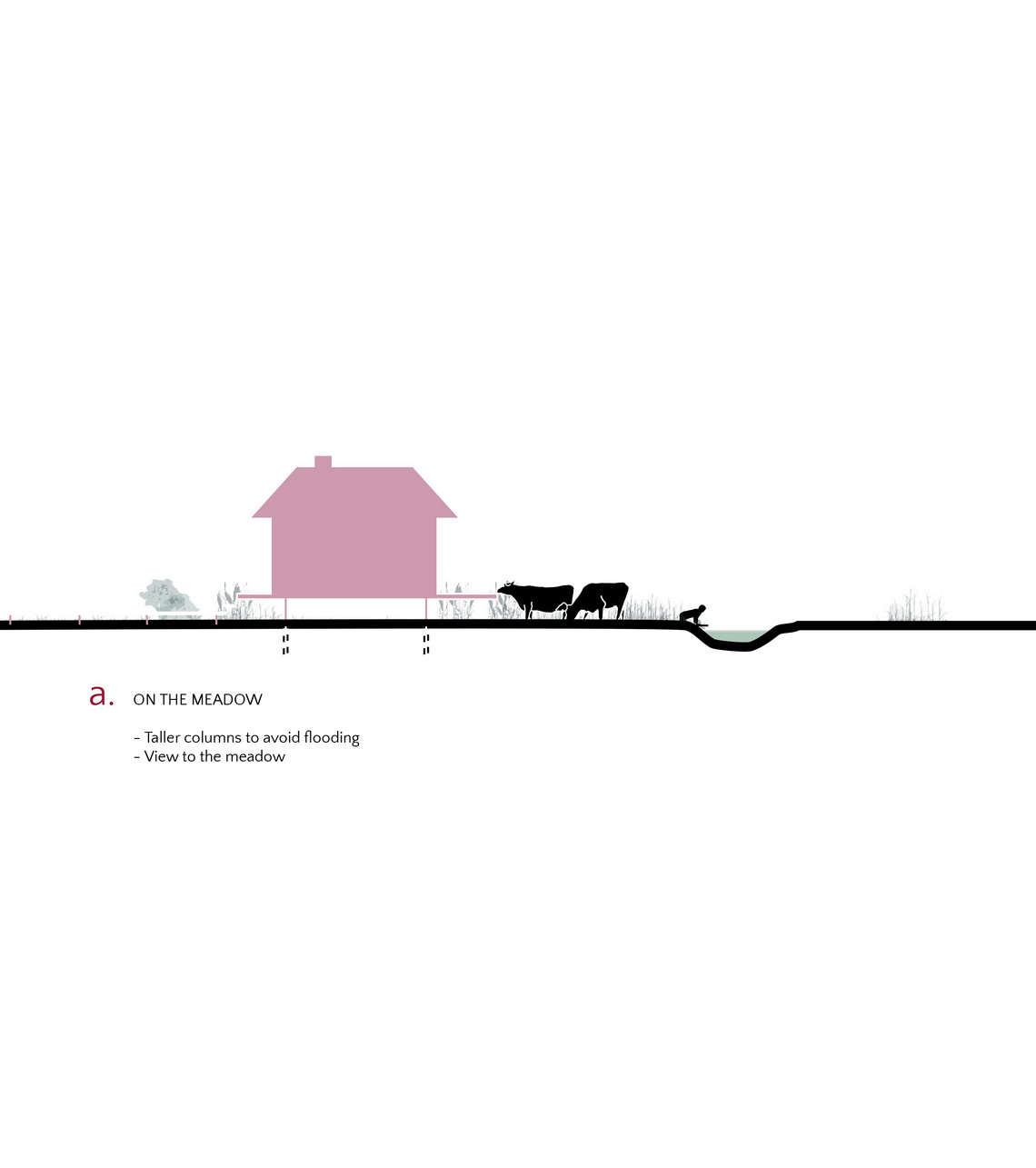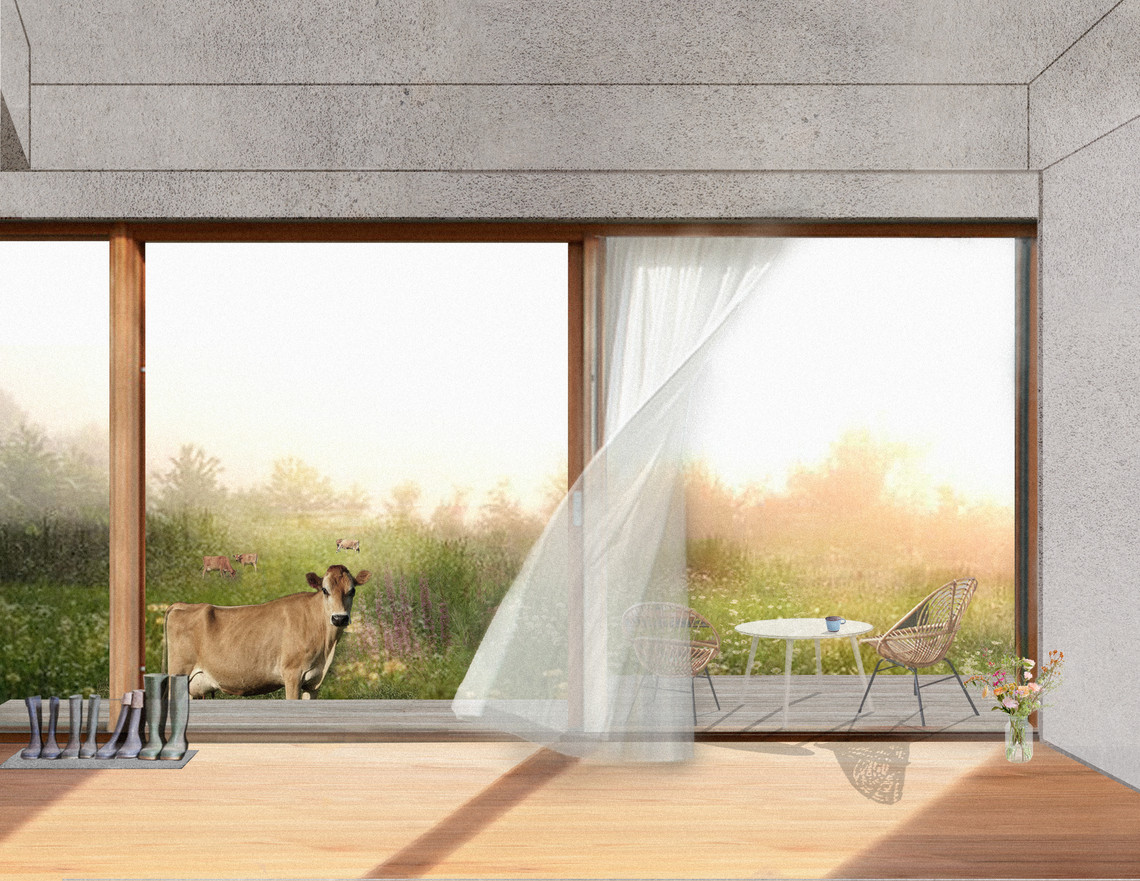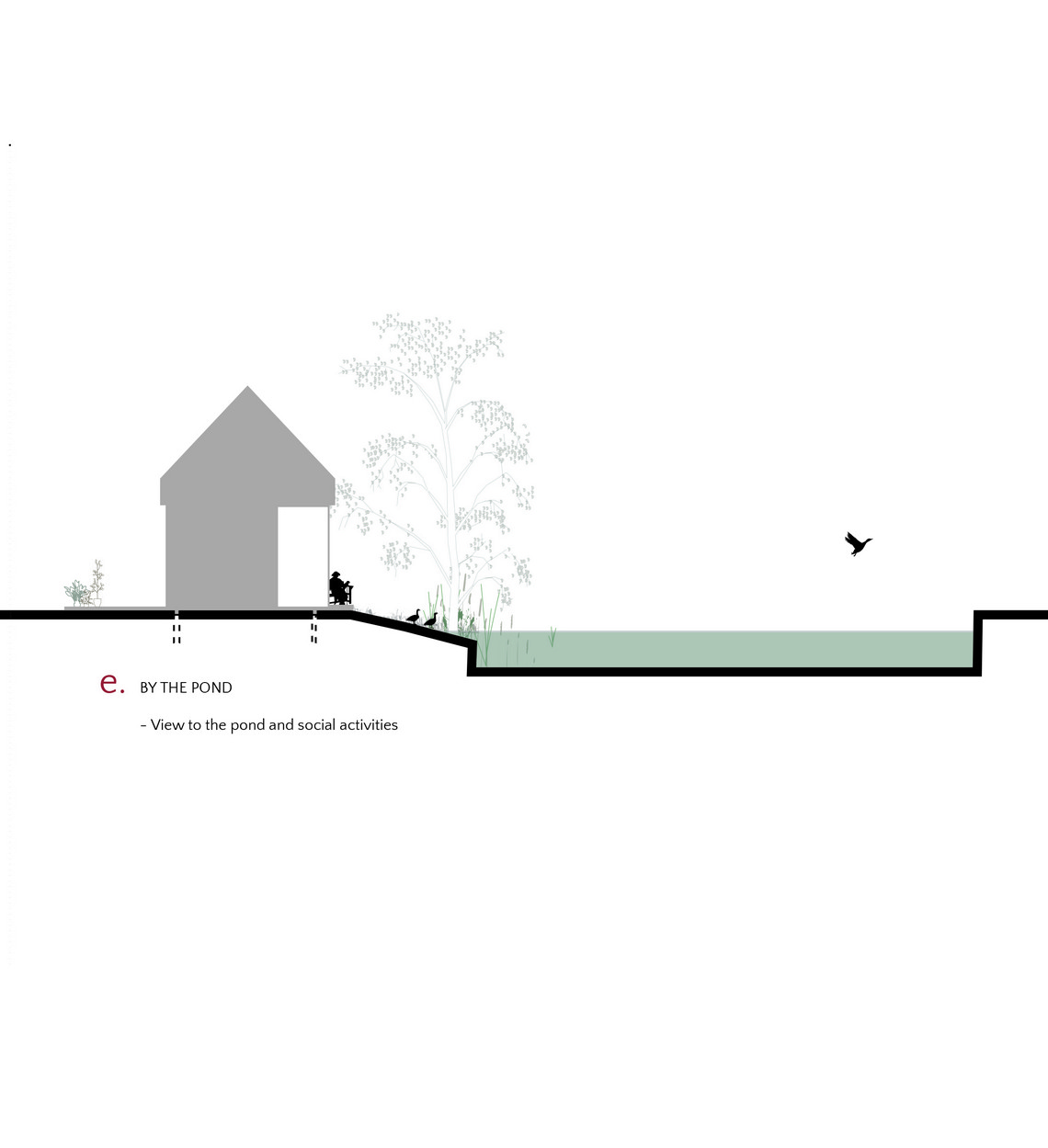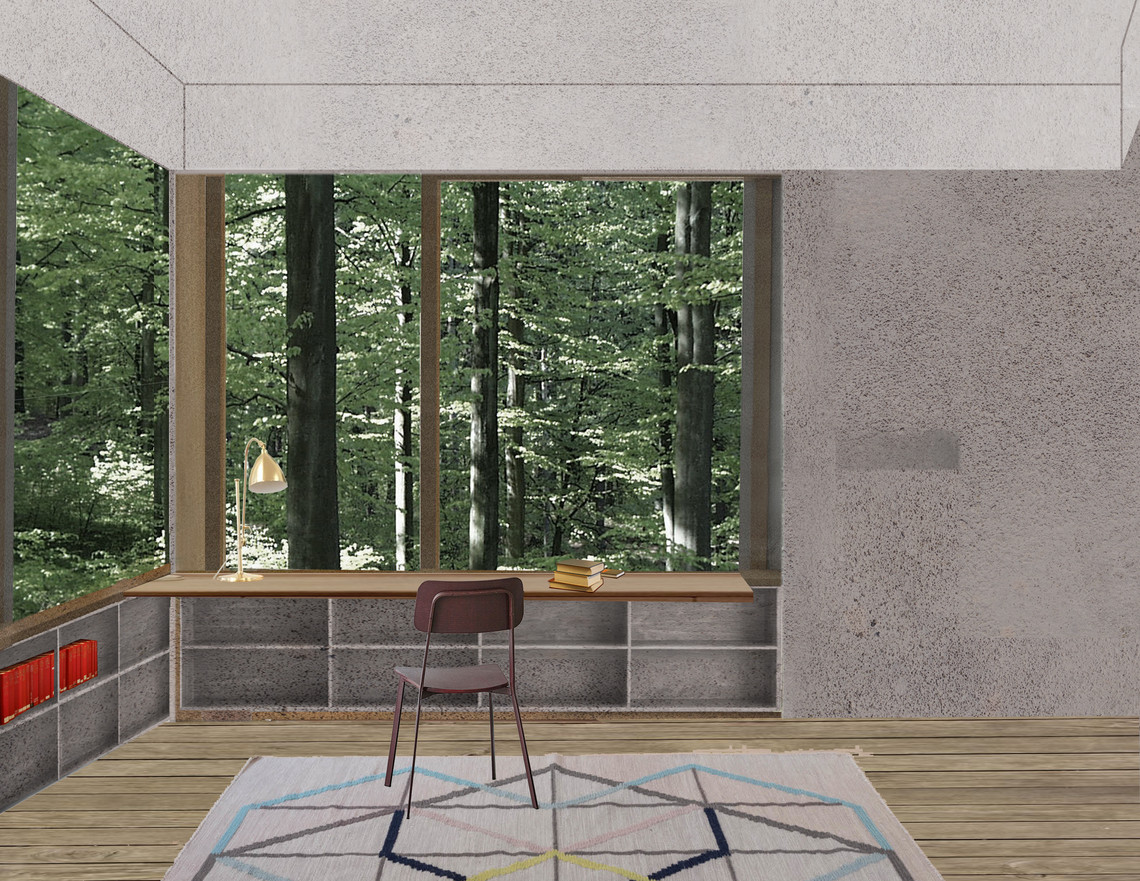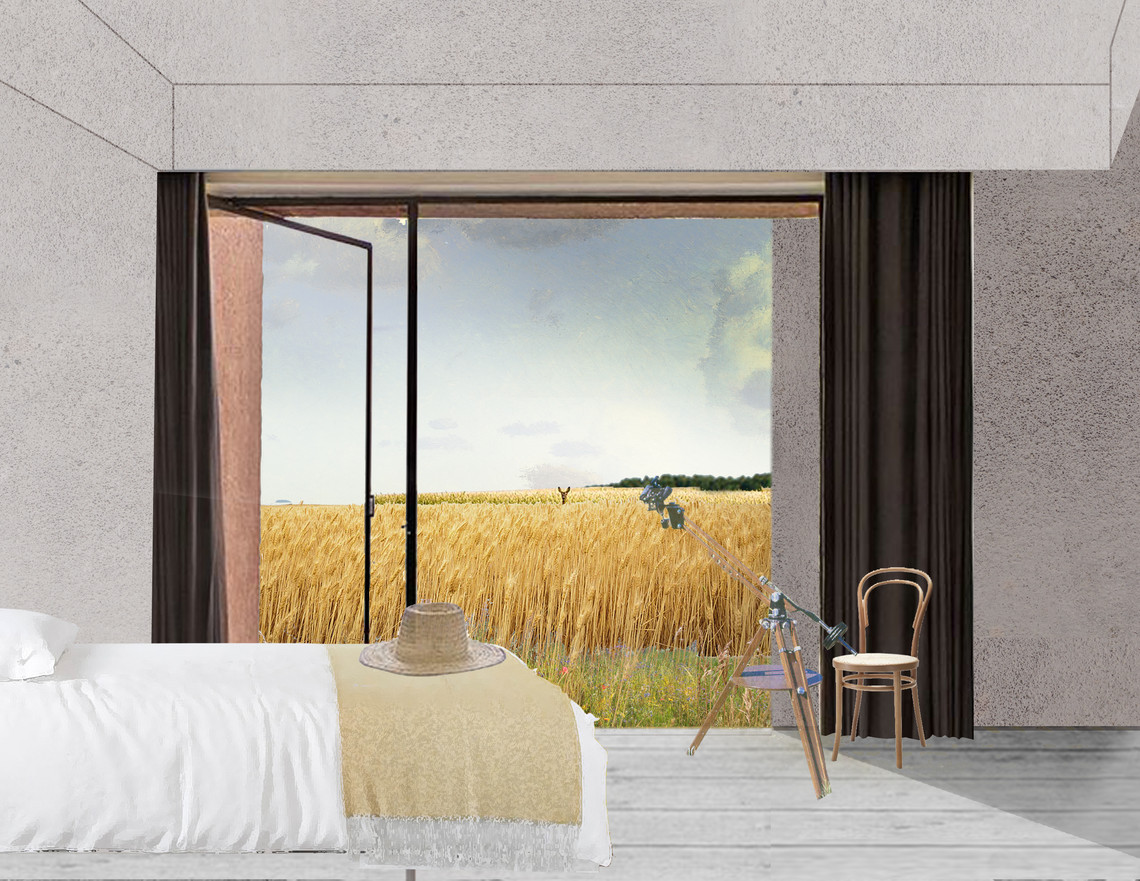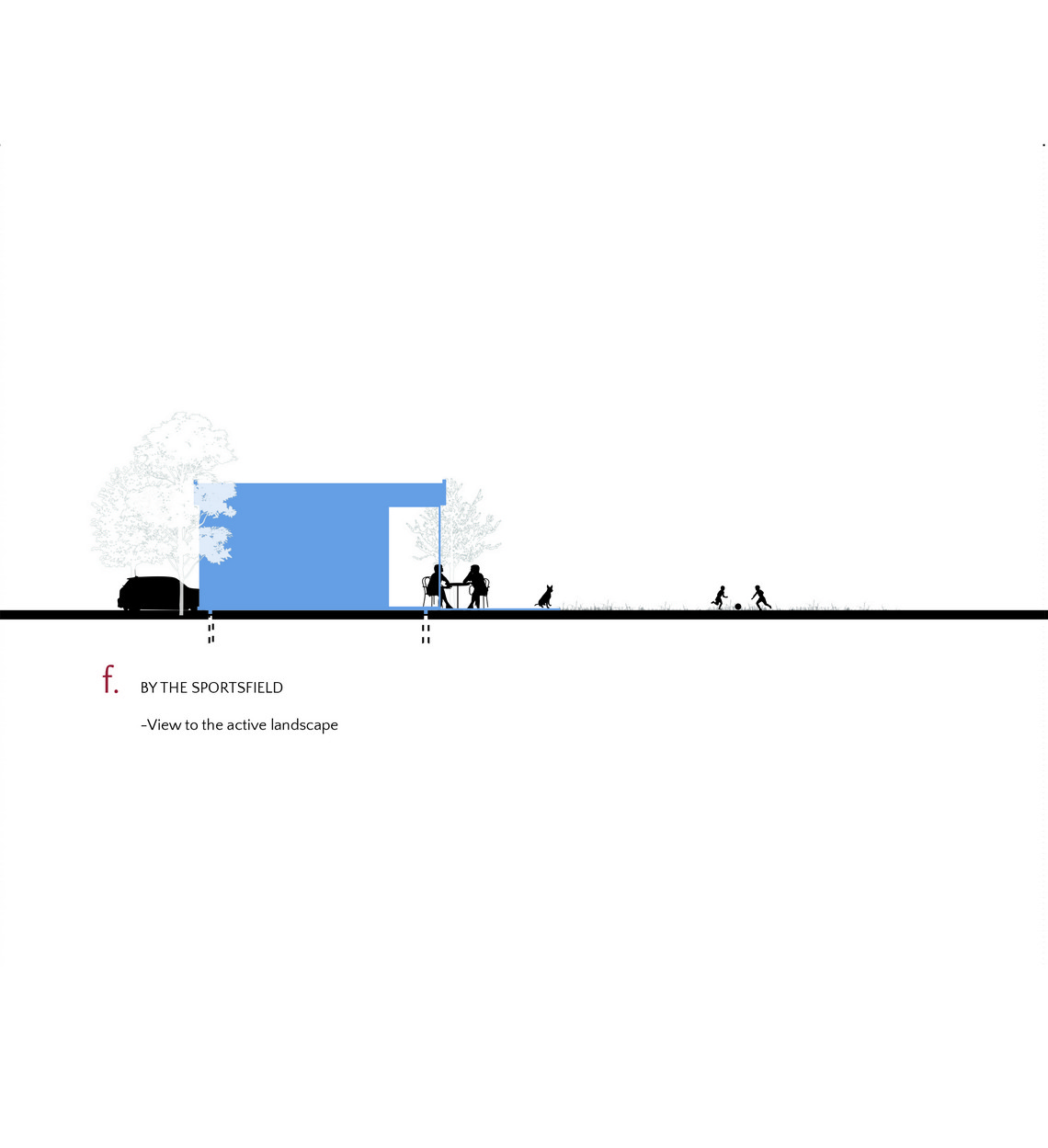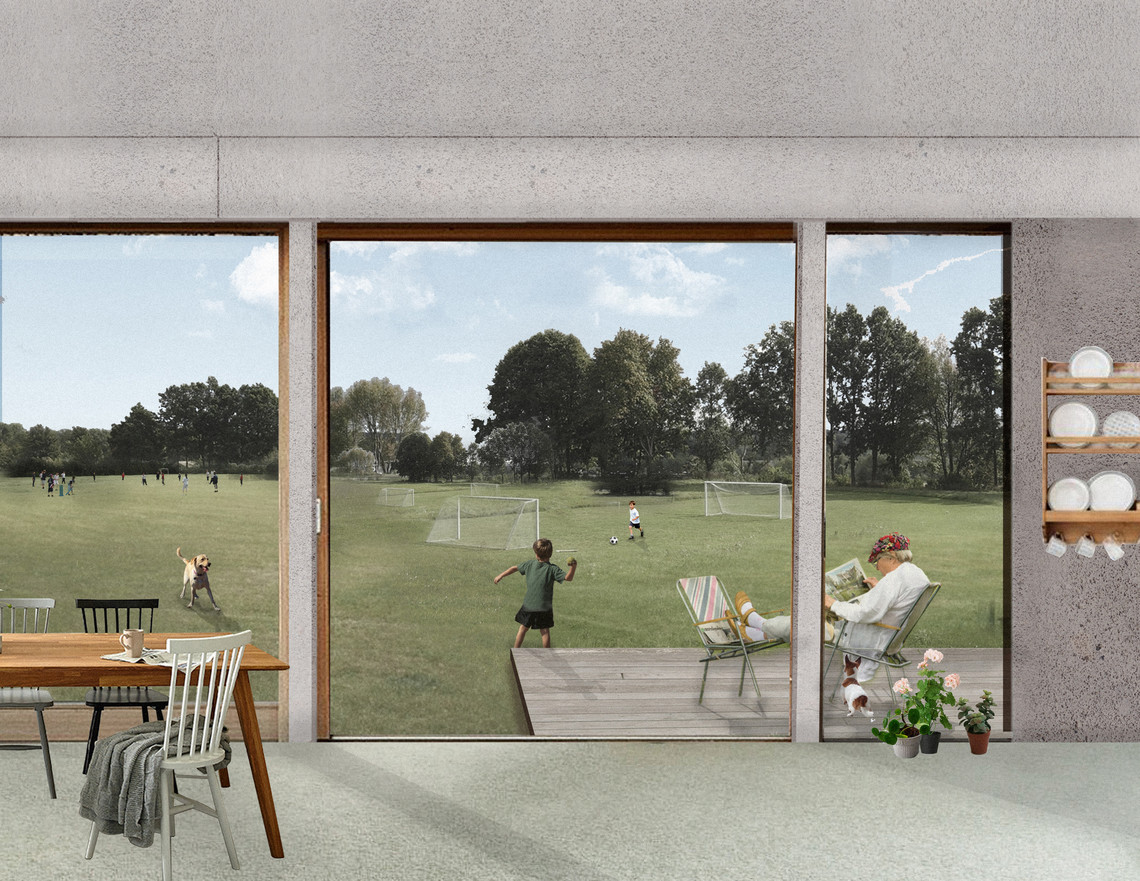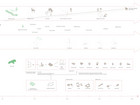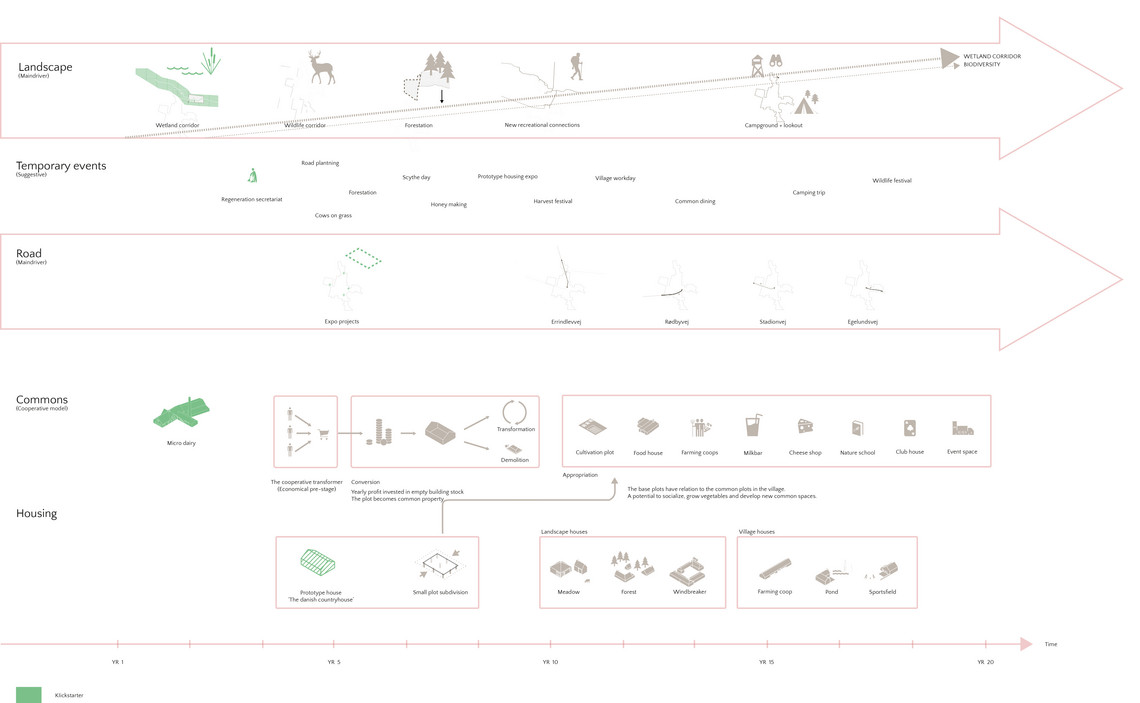
Back to the village - Perspectives for the future
The countryside of Denmark has been depopulating during the past century and the Culture of our villages is disappearing. The population drainage from the smaller settlements, has affected the local market of housing and detail and welfare institutions such as schools and health care facilities are being dismantled and centralised in bigger cities.
Errindlev, on the southern coast of Lolland, is a classical example of the struggling Danish village. This settlement used to be a thriving community with a strong cooperative tradition, but is today fighting for survival. As our society has developed, the village has lost it’s relation to it’s original source, the agricultural landscape. The village which gave birth to the cooperative movement is no longer an important driver in our contemporary society.
Rural municipalities are today finding new foothold, such as planning for tourism as their future livelihood. In connection to new strategies for tourism the countryside is in need of new organisation and a rediscovery of local identity. This thesis is a study of future perspectives for the village. How can urban and rural as two opposites come to support, instead of being competitors against one another? Could the recreational, scenic rural be developed as an attraction compared to the intense, urban life?
What could be survival strategies for areas with population decline?
And how can such areas find relevance again?

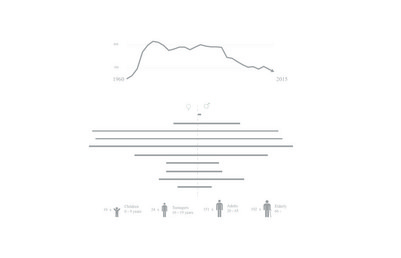
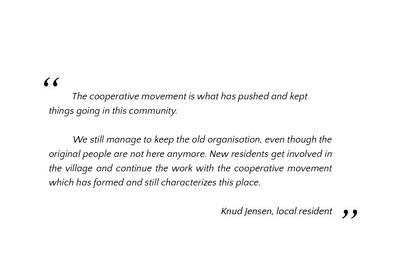
THE AREA STRATEGY - NEW LINKS
The landscape is still the most original native quality in the countryside, but modernisation has left some undesirable aspects and the village is today disconnected from it’s original source.
The area strategy is developed by looking at surrounding potentials such as: water streams, habitat areas, forests, water quality, surrounding attractions and based upon the plans that Lolland municipality has already worked with.
The attractions and the landscapes in the area are strengthened through a new recreational route which mainly runs along existing water streams. By creating this new wetland corridor the larger landscape strategy does not only connect, but also improves water quality and biodiversity and strengthens the landscape experience for tourists and residents.
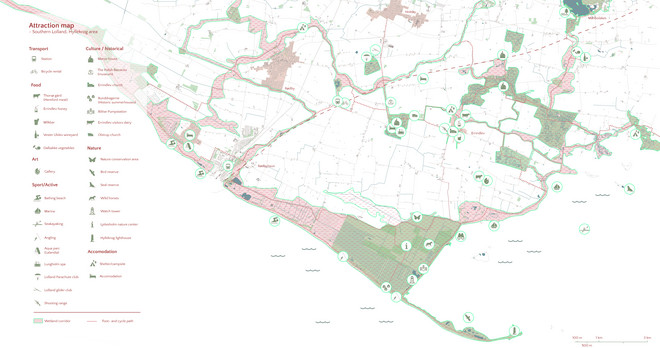
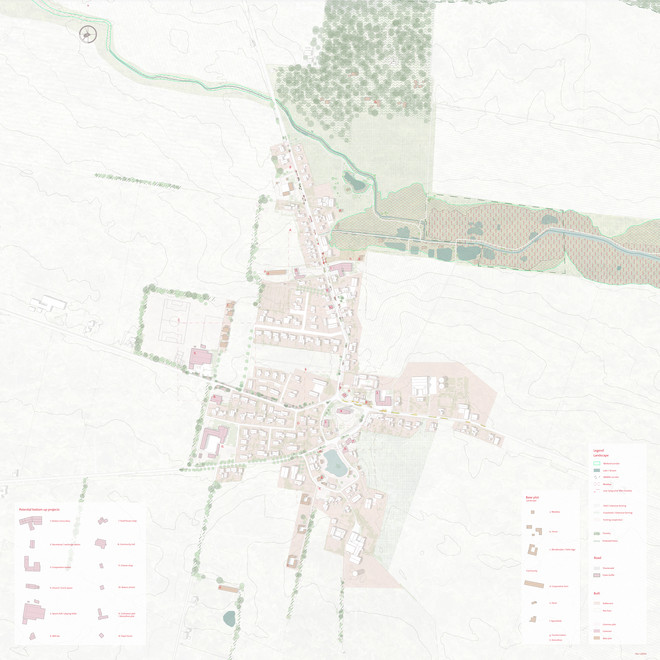
THE LANDSCAPE STRATEGY - STRENGTHEN QUALITIES
The overall ambition for the landscape is to reconnect the village and the villagers to the landscape and enhance already existing qualities.
The meadow would be developed in a low-lying area north-east of the village. Today this low-lying soil is less furtile to the farmers but could, with a minimal intervention, be turned into a meadow. An extensive farmland that would be maintained by grazing cattle and connect to the larger strategy and the network of streams. The wetland meadow would improve water quality in the streams and strengthen biodiversity.
Lolland is known for its dominant wind-direction from south-west and 'natural' windbreakers are already shielding the village from the wind. By adding wildlife friendly vegetation to these windbreakers and adding new plantation between field plots, new corridors would be made for wildlife. This would strengthen biodiversity, bring wildlife closer to the village and improve the landscape experience.
Thirdly the manor house forest, to the north-east of the village would be extended down, bordering to the village and the meadow and create an experience rich and diverse landscape along the new wetland corridor.
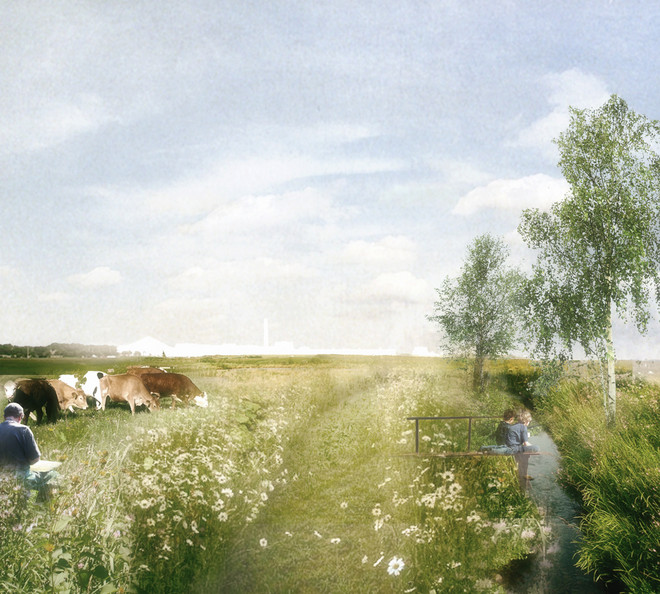
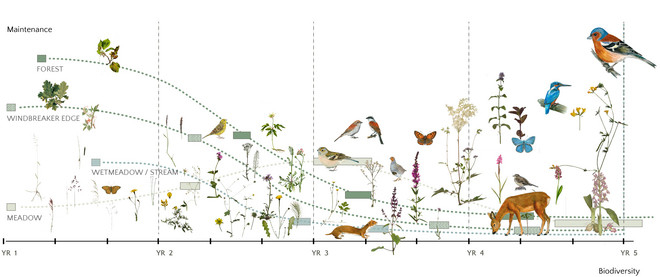
THE ROAD - A SOCIAL BACKBONE
The second part of the masterplan is to rethink the village road. During modernisation the carspace grew and today asphalt is dominating more than 50 % of the public space in the village.
However, there are no longer as many cars going through and maybe this space could come to use in a better way. The main ambition of the road strategy is to create an intimate and social backbone in the village and to give visitors and residents a more rich and diverse experience of this public space.
This could be done by making the space for cars more narrow and broaden the surface for pedestrians and bicycles. Buffers between the road and the new walking space would make the cars slow down and at the same time give room for more vegetation. By using different kinds of vegetation and changing the surface of the walking space the whole atmosphere of the village could change.
The transformation of the road would give back the houses their front area and possibly activate the front yards to become social spaces, used for other purposes than just as a buffer between the houses and the carspace.

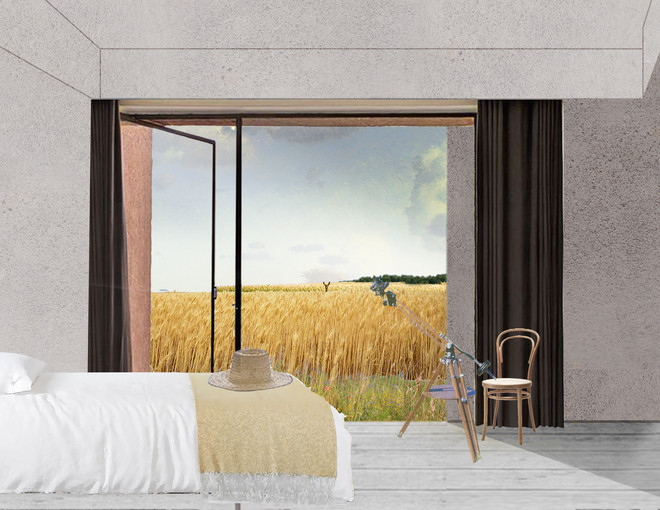
THE BUILDING STRATEGY - PART 1 - COOPERATIVE TRADITIONS
The last part of the strategy is dealing with the built. The built is divided into two, the common plots in the village and future houses in the landscape. The main ambition for the built is to support the social life in the village which is already there today, but also to reconnect future houses to the landscape surrounding the village.
The village is already today based upon a strong cooperative spirit, which keeps things going and the building strategy is to a very high extent based upon the expectation, that things would emerge from the qualities developed around them. As the context would change (e.g. the landscape and the road) the vacant buildings in the village could potentially be turned into common plots, developed bottom up by the villagers.
Some of these could become tourist attractions or build on the social activities in the village. Obviously some houses should be demolished and these plots could be developed as common ground.
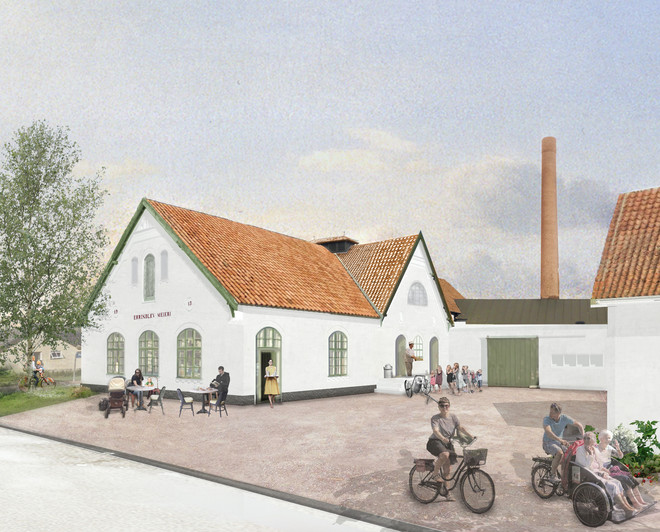
The dairy has been out of function since 1987 but was preserved in 2000 as one of the best examples from it’s time. Today the residents own the building and are taking care of maintenance. The dairy has some obvious qualities which should be preserved and transformed as part of an already existing strategy towards a more historical development. This kind of building is very unique, not only to the village, but to Denmark. It is a monument for the cooperative movement which started bottom up in the countryside and shaped the modern establishment of our society. The dairy could potentially become a micro diary open to visitors and with a produce of high-end agricultural products. This is where a future vision could be kicked off.
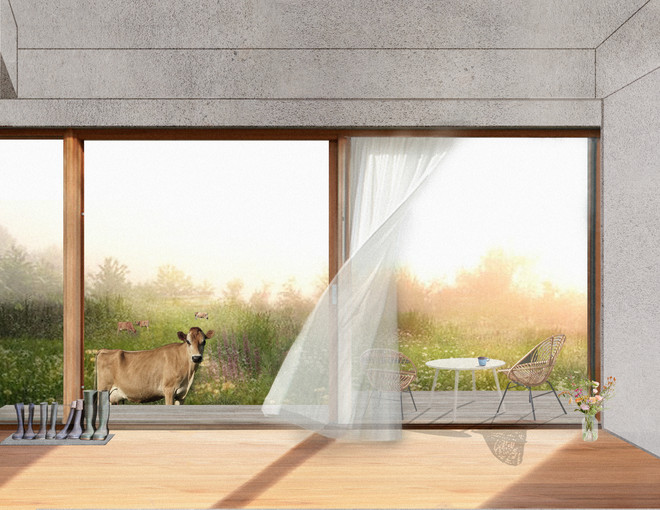
THE BUILDING STRATEGY - PART 2 - RECONNECTING TO THE LANDSCAPE
The second part of the building strategy is regarding new houses in the area. As the village developed the houses became more standardised and neglecting to the context they are in. This part of the strategy suggests the direction of development if this becomes relevant in the future. The main ambition is to recreate the connection to the landscape and guide the development towards a stronger local identity and more common ownership. All of the future plots would be base plots, where the residents would only own the base of their house. The surrounding areas and green spaces would be common. The base plots would relate to specific landscape situations, and these different contexts could inform the design of the house. E.g. A house on the meadow, in the forest, by the windbreaker or on the sportsfield. Some values should guide the design of the houses and ensure a higher quality of buildings in the area.
The gallery shows some of these guidelines, principal sections and visuals of the qualities that could emerge from this strategy.

